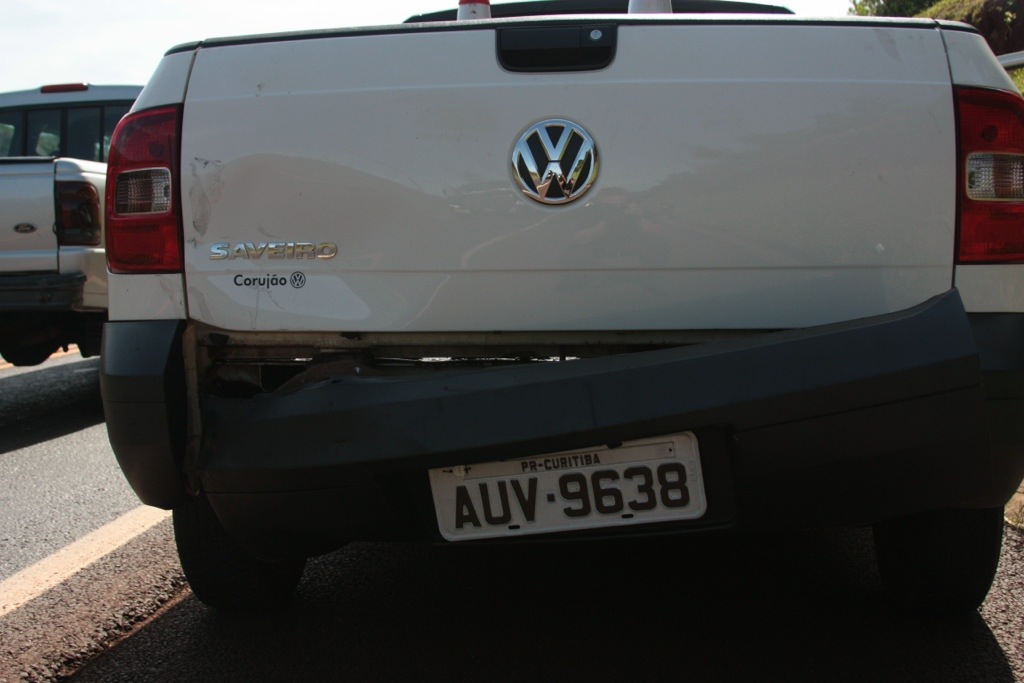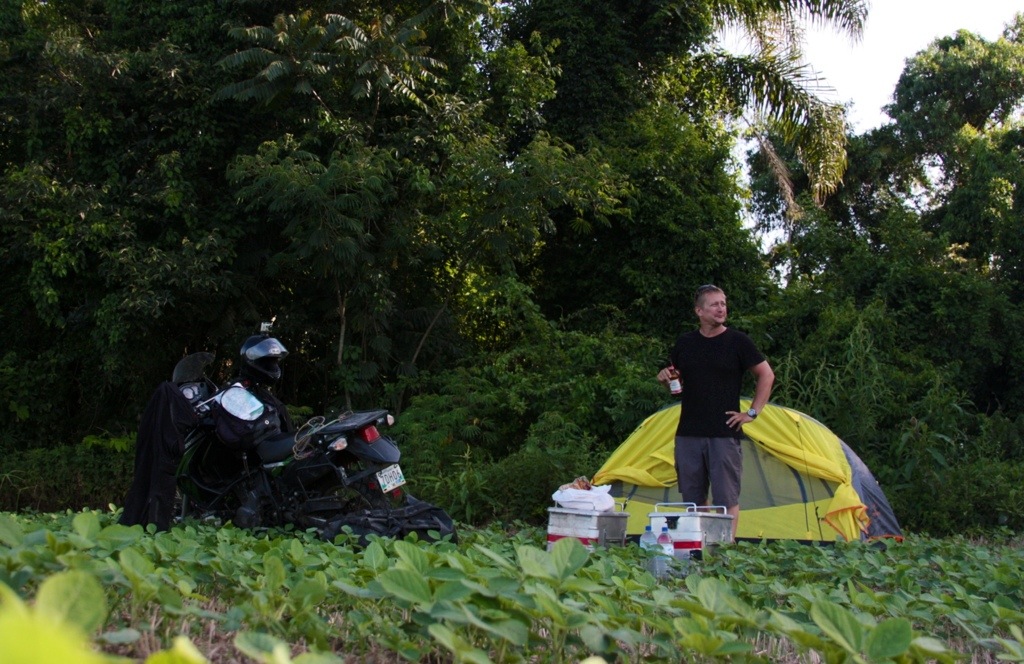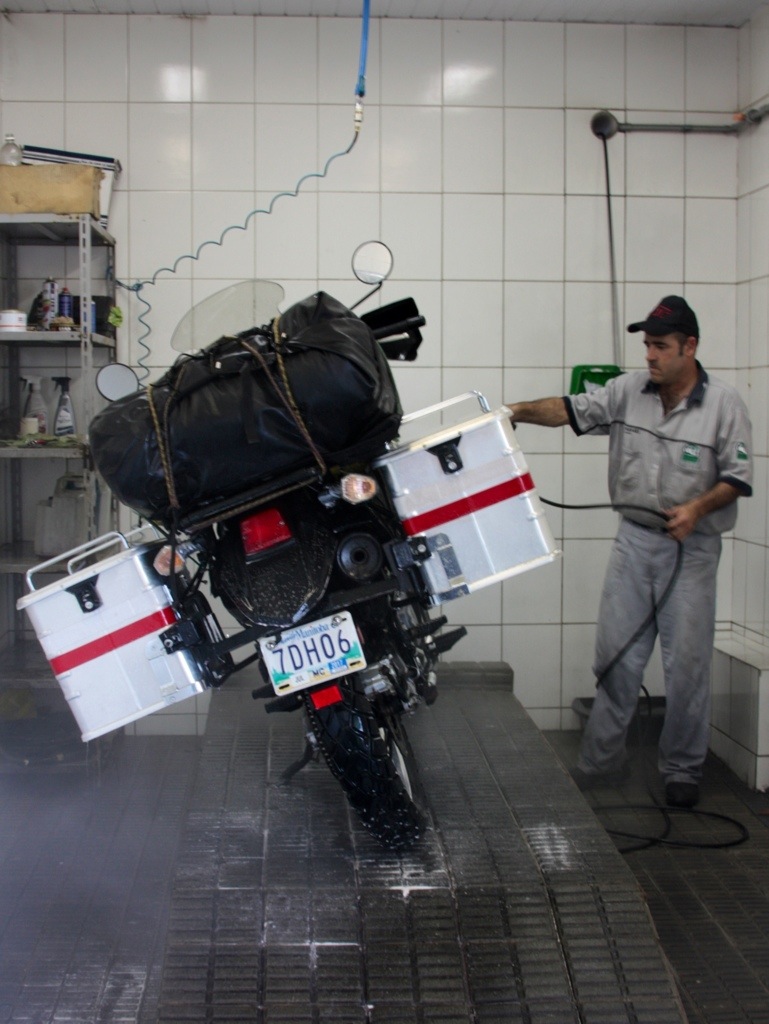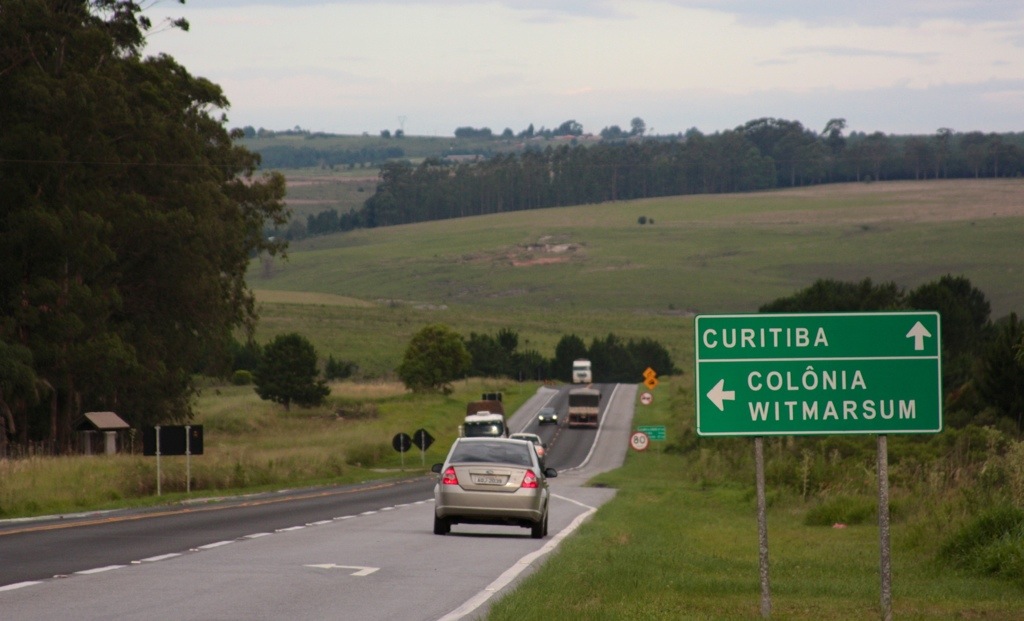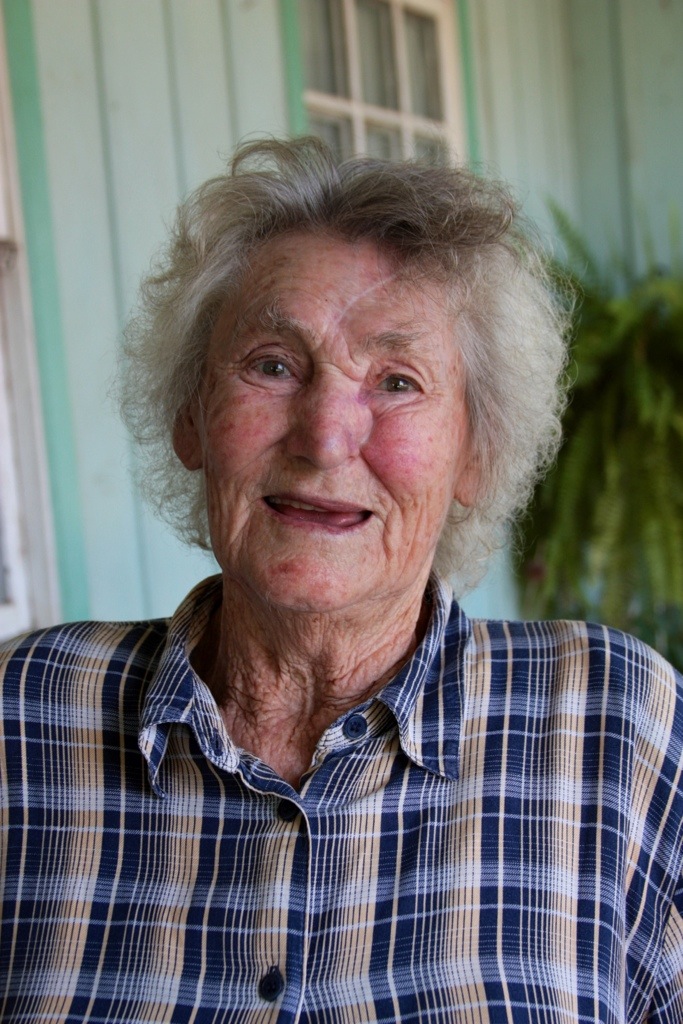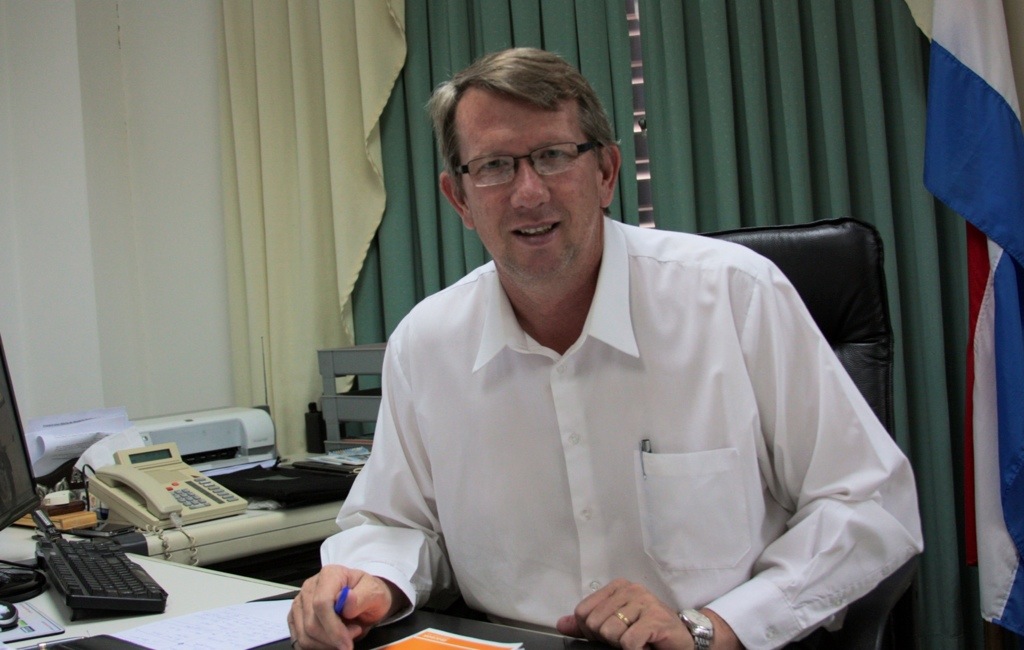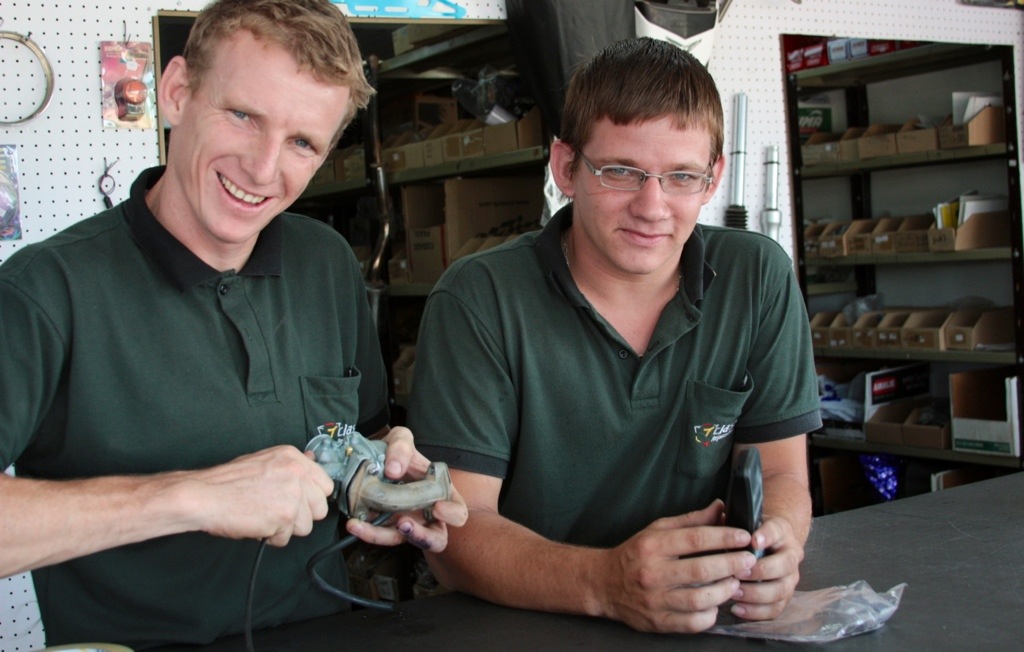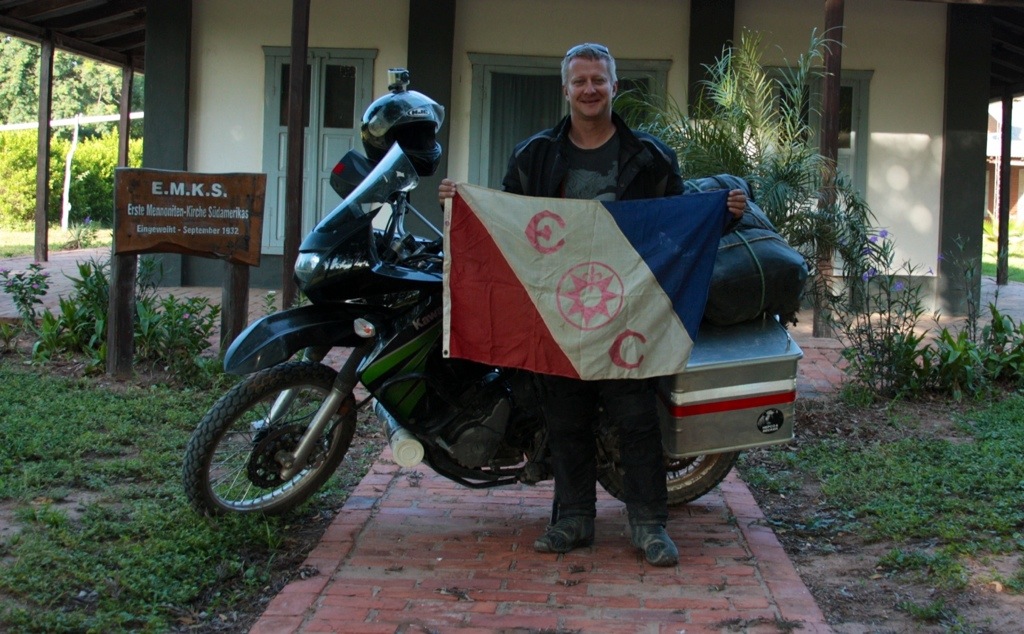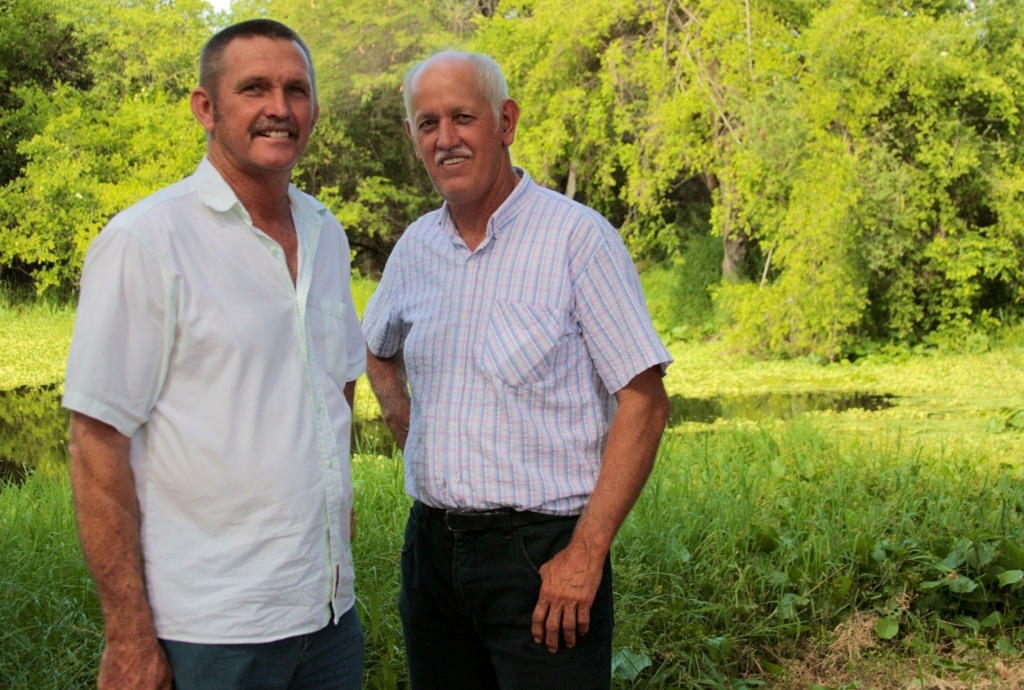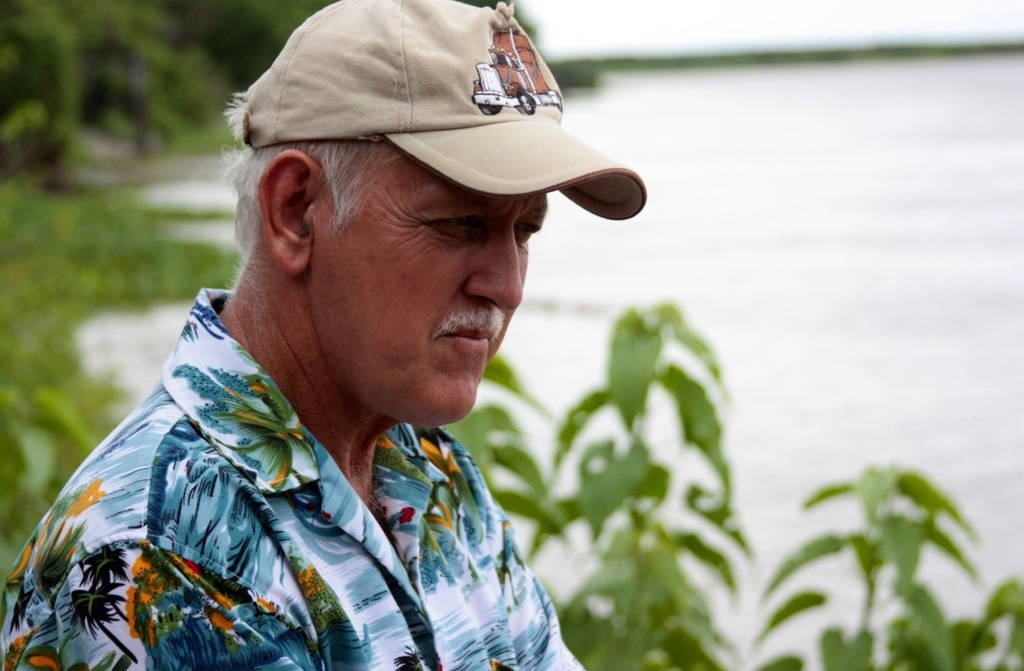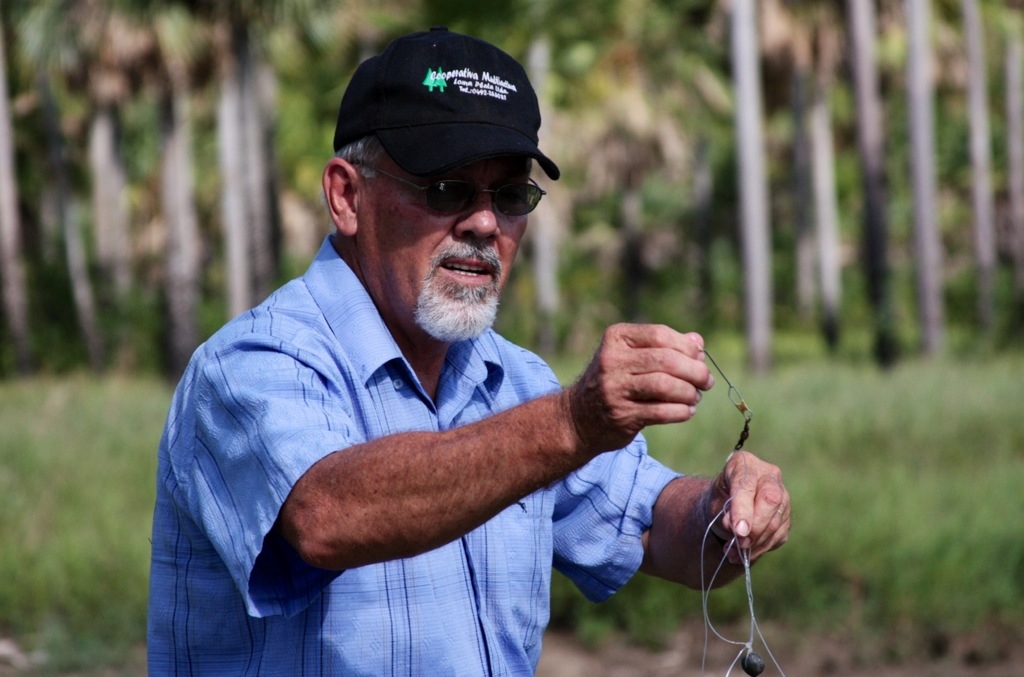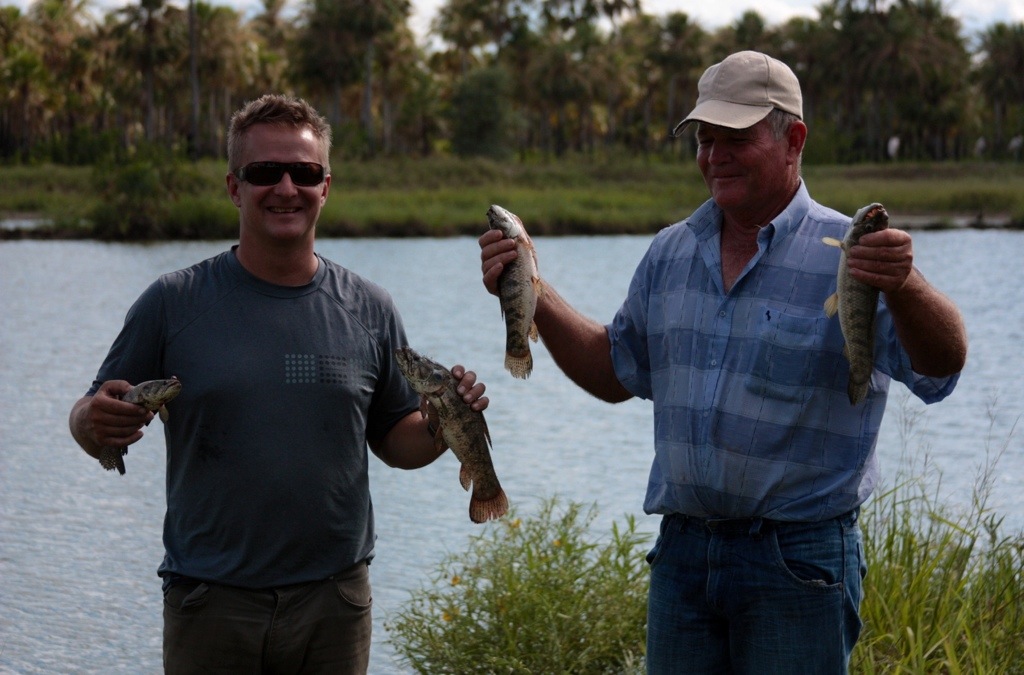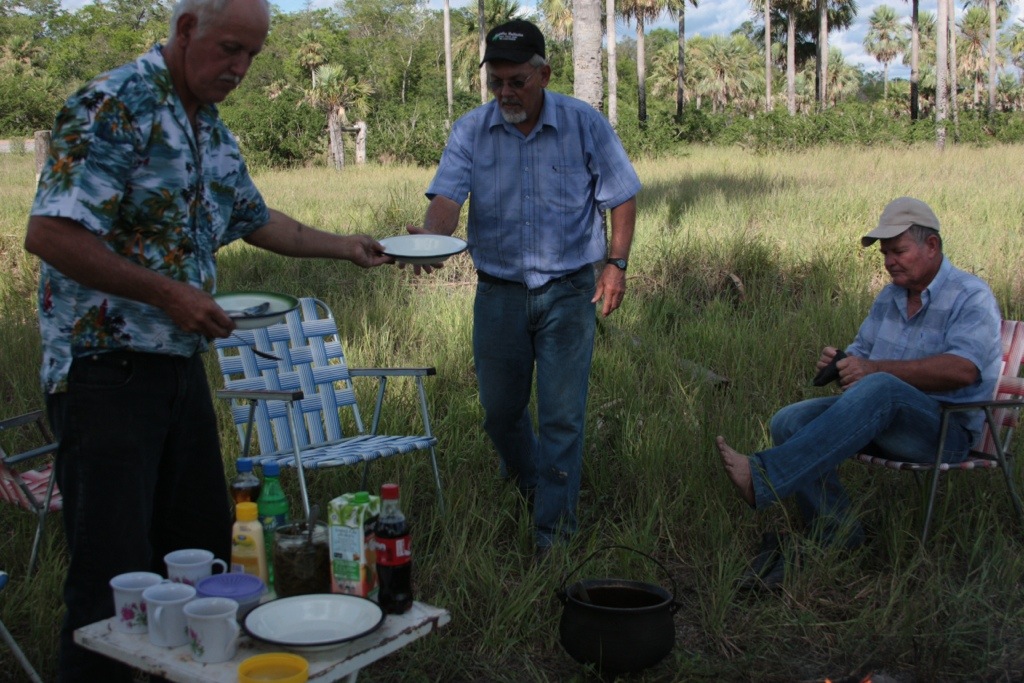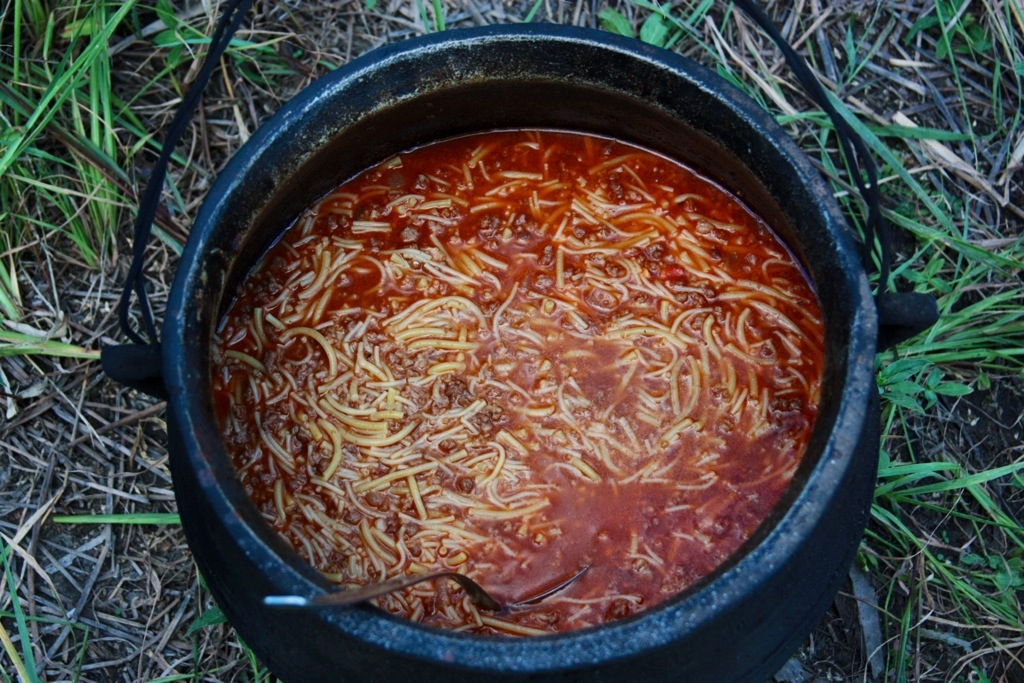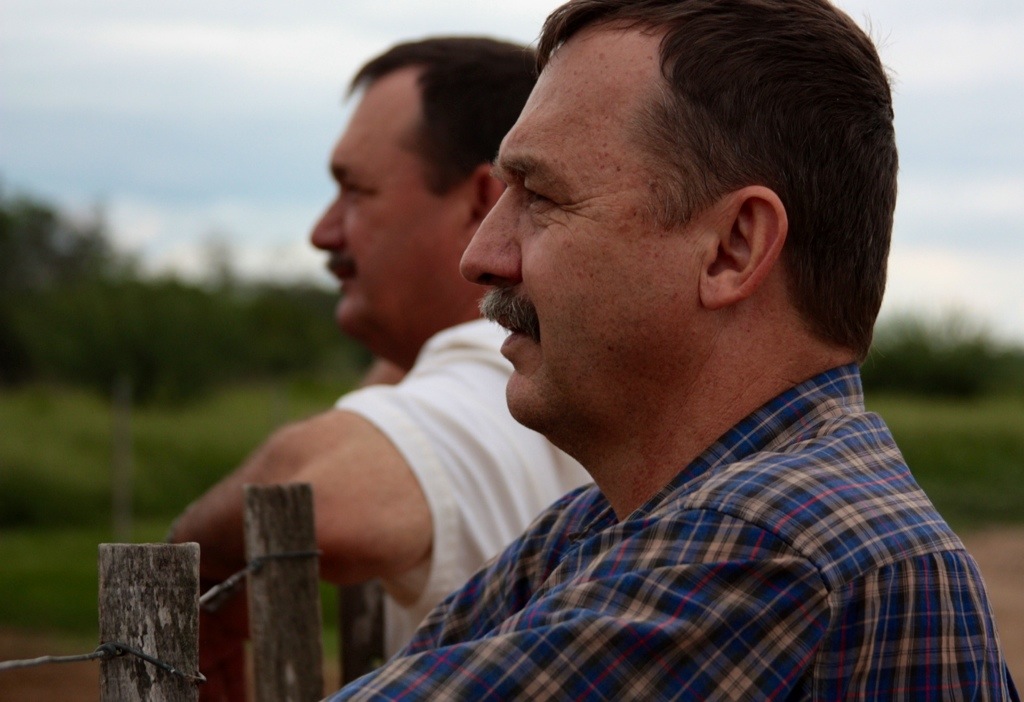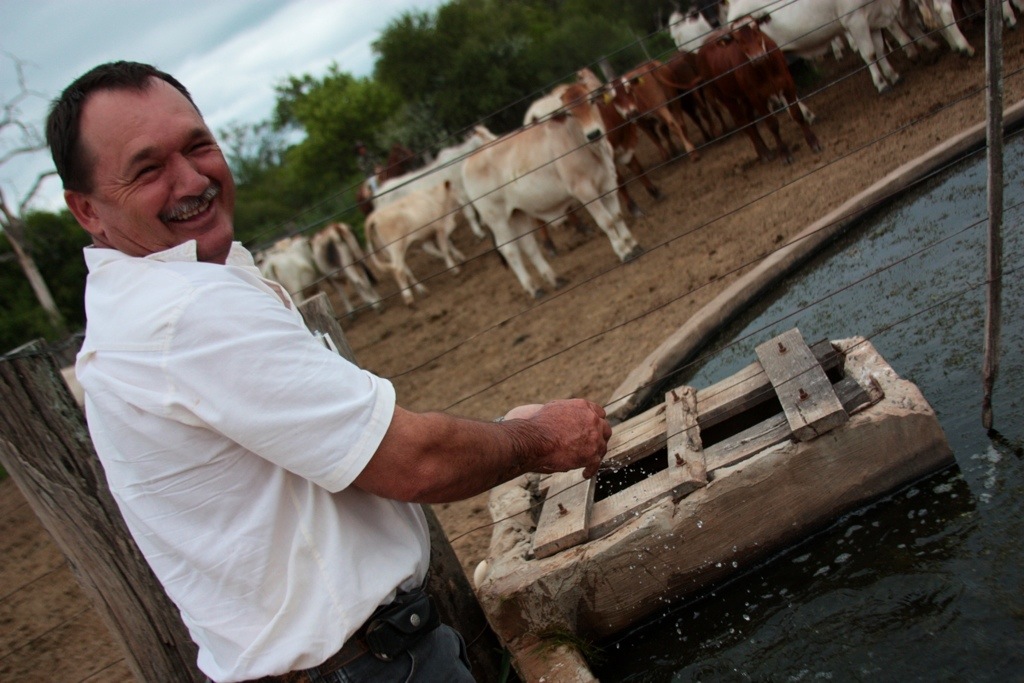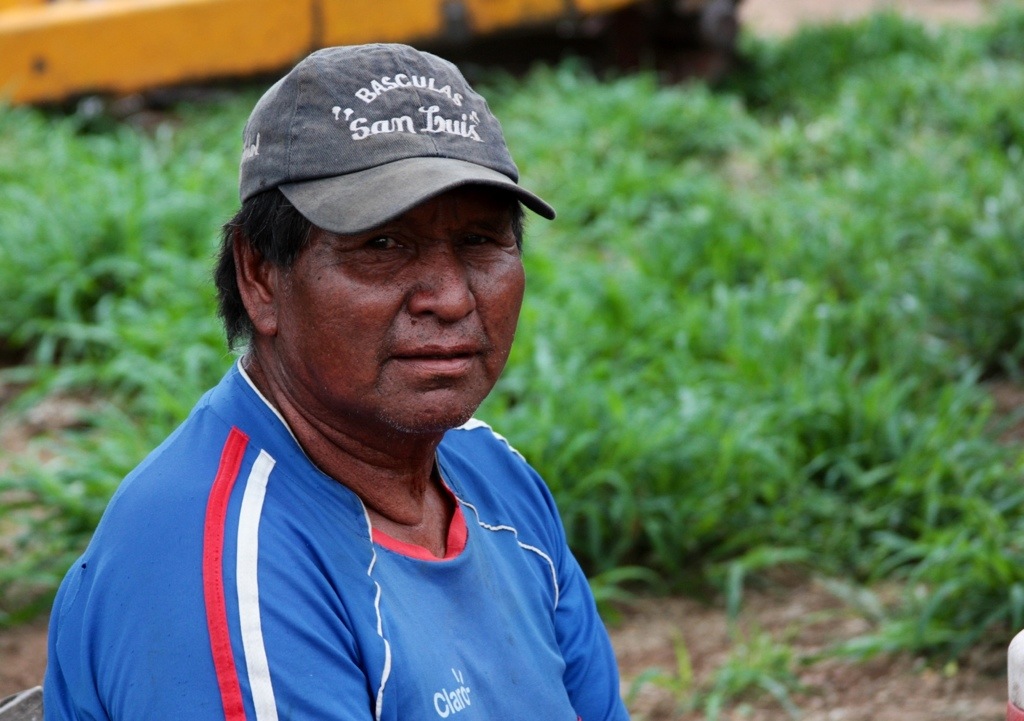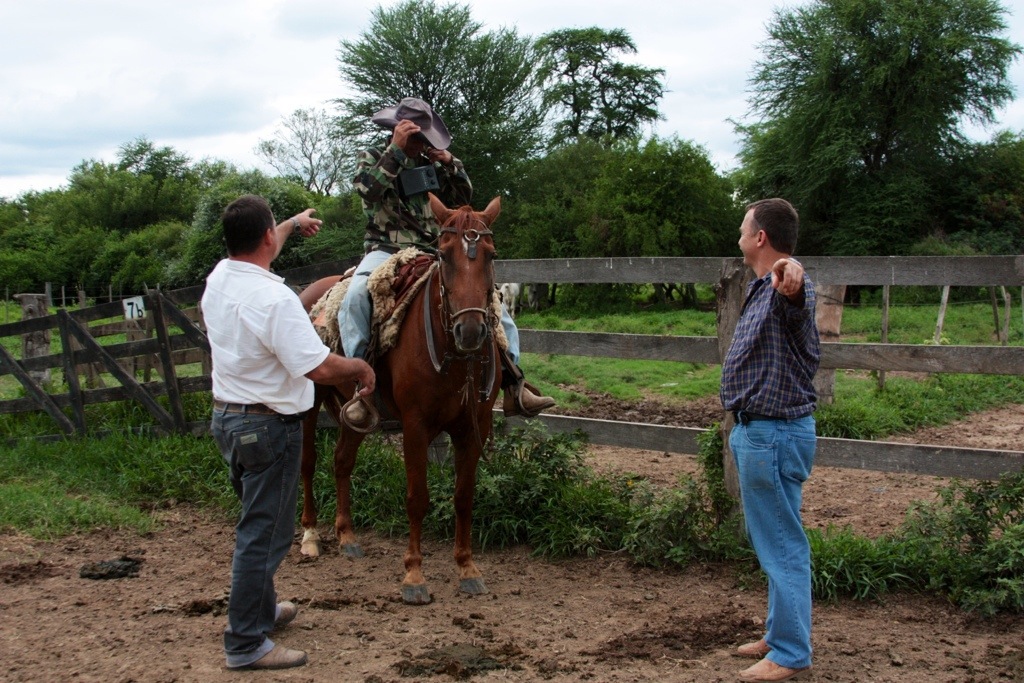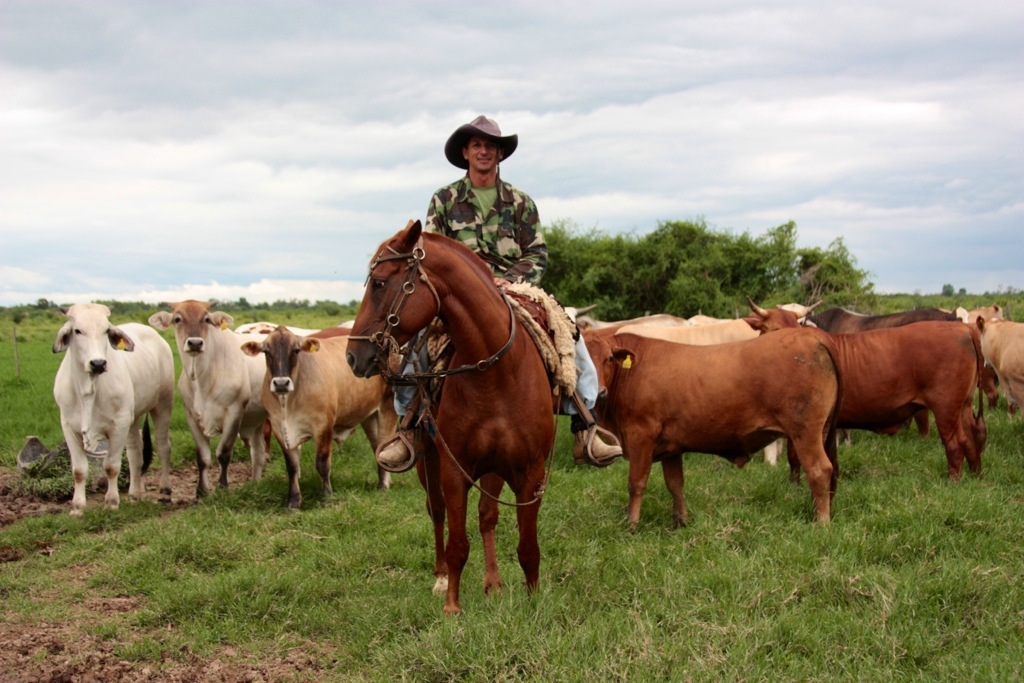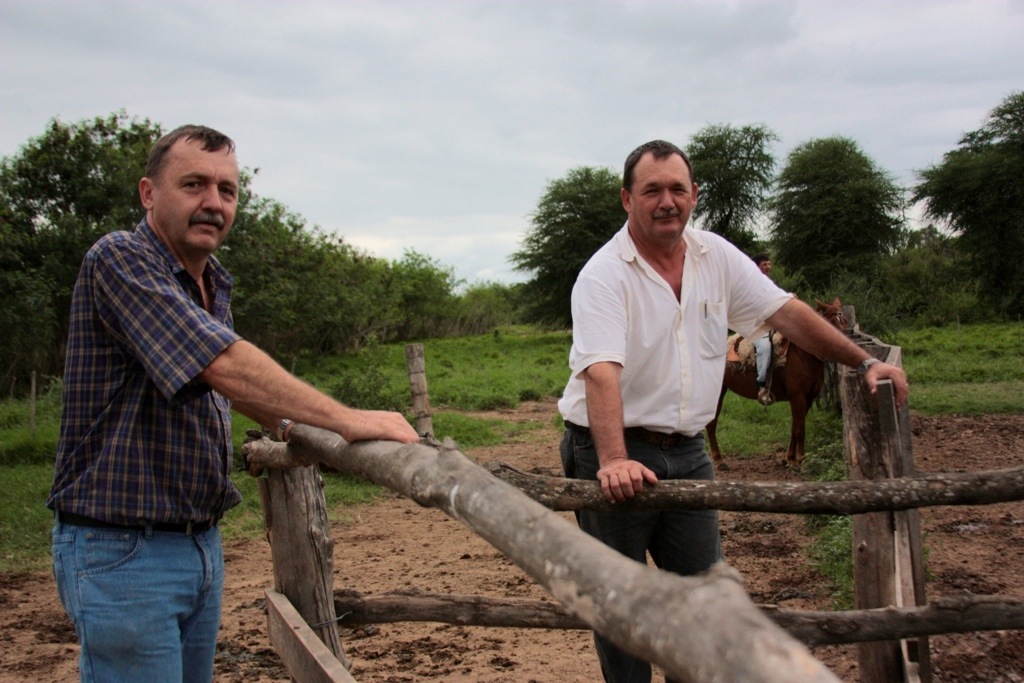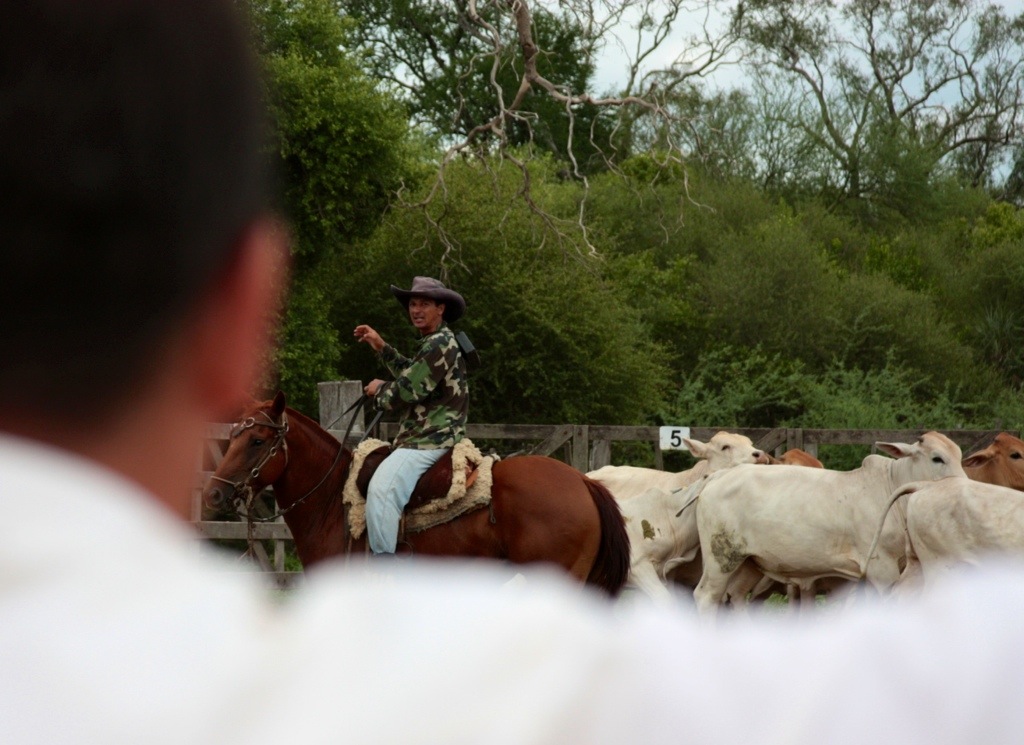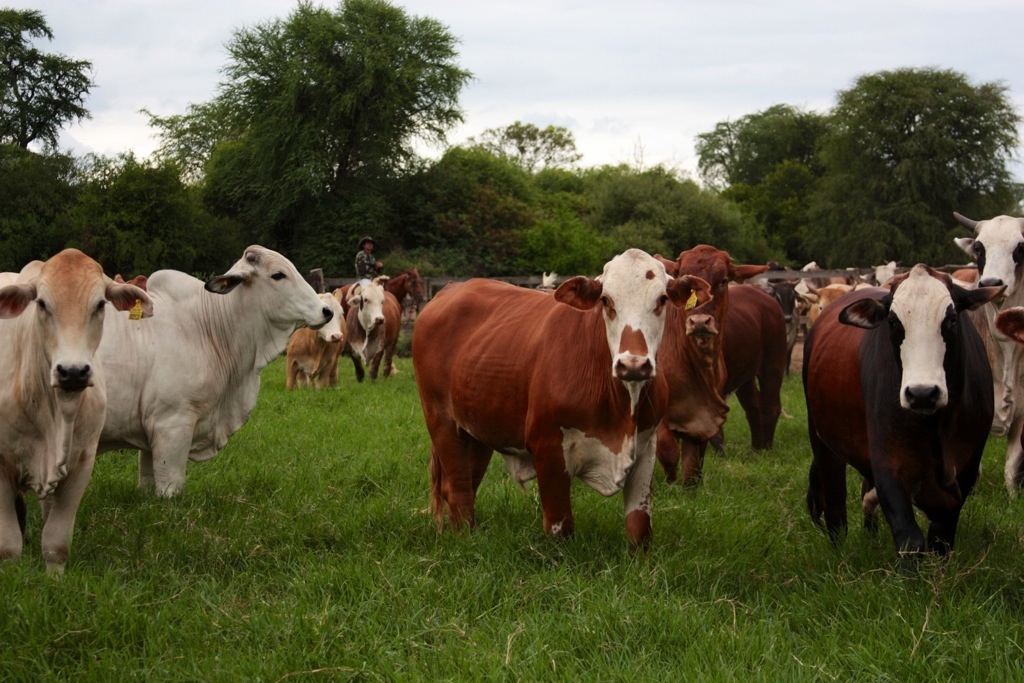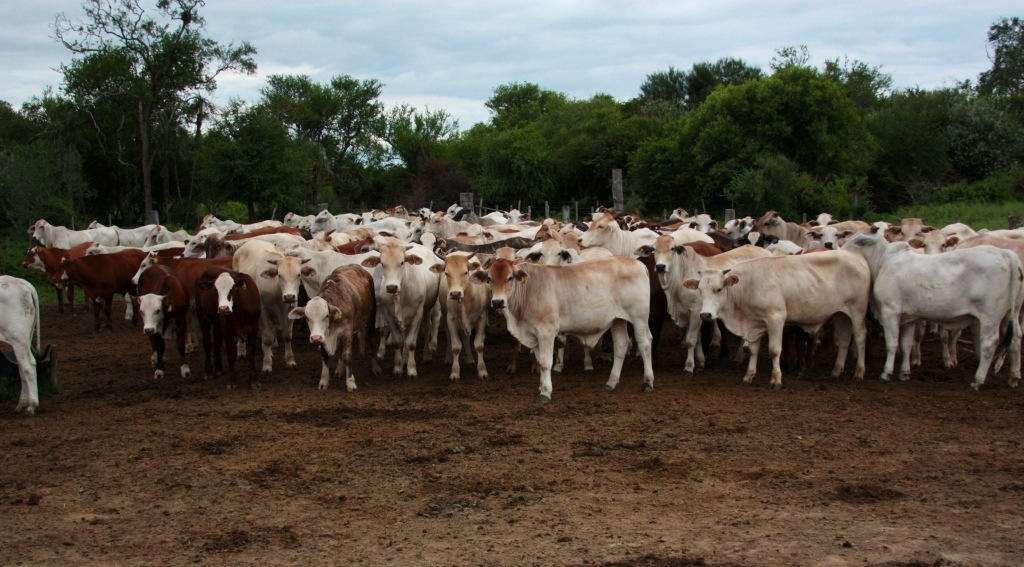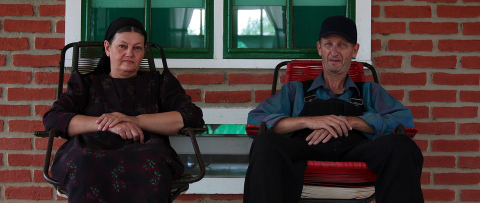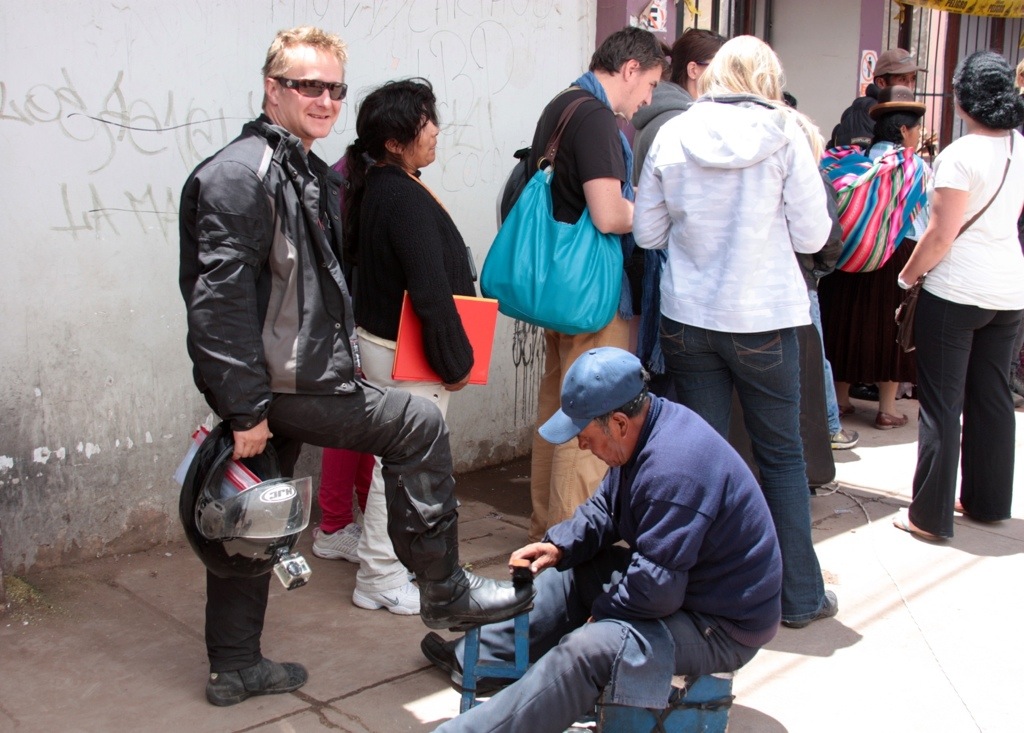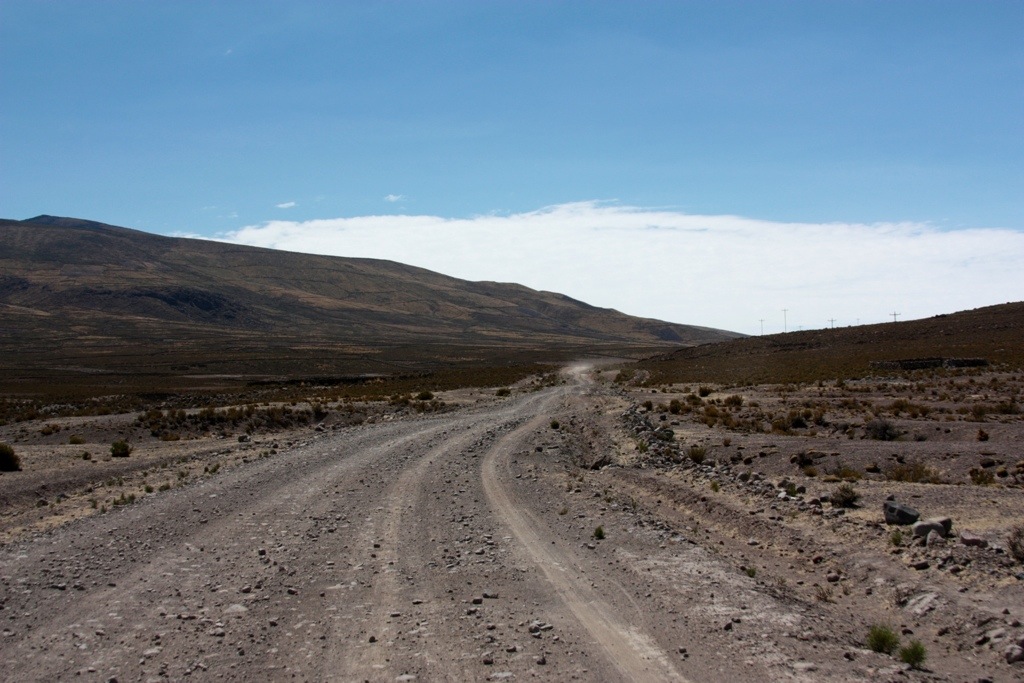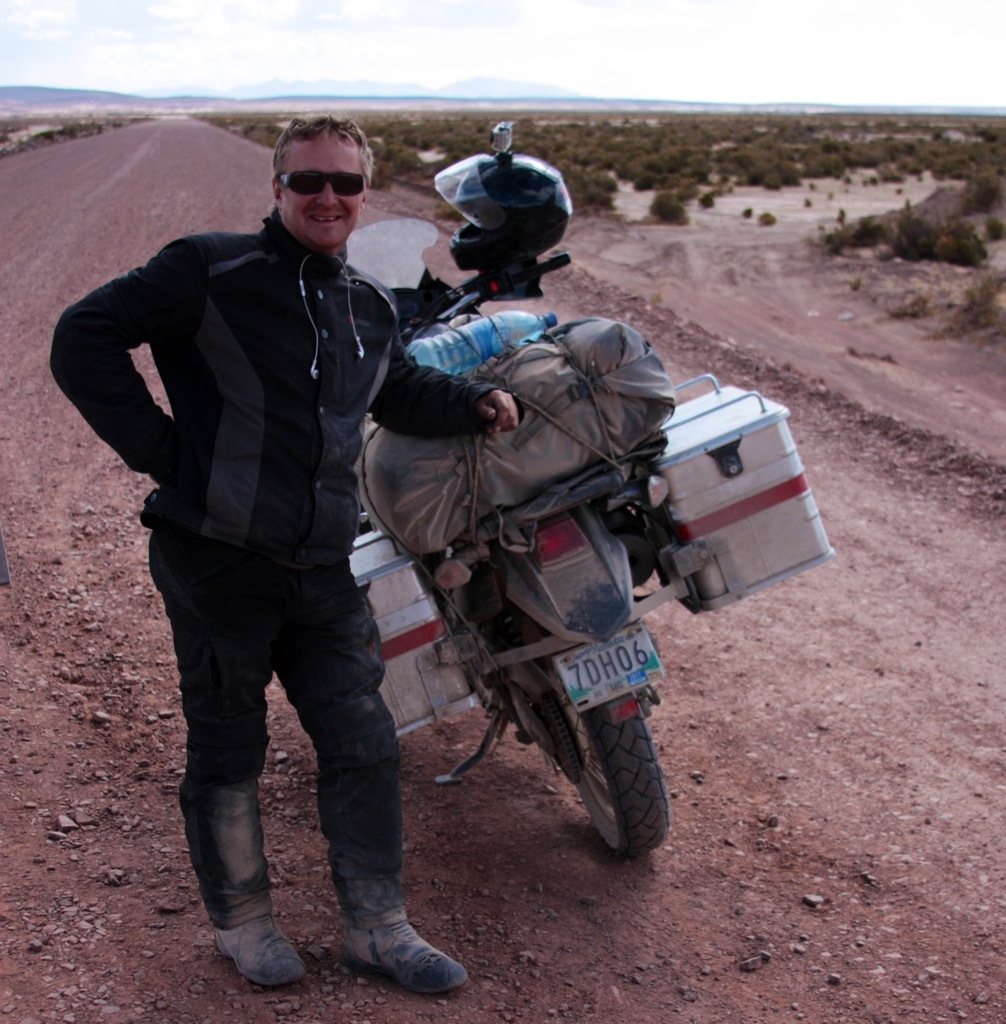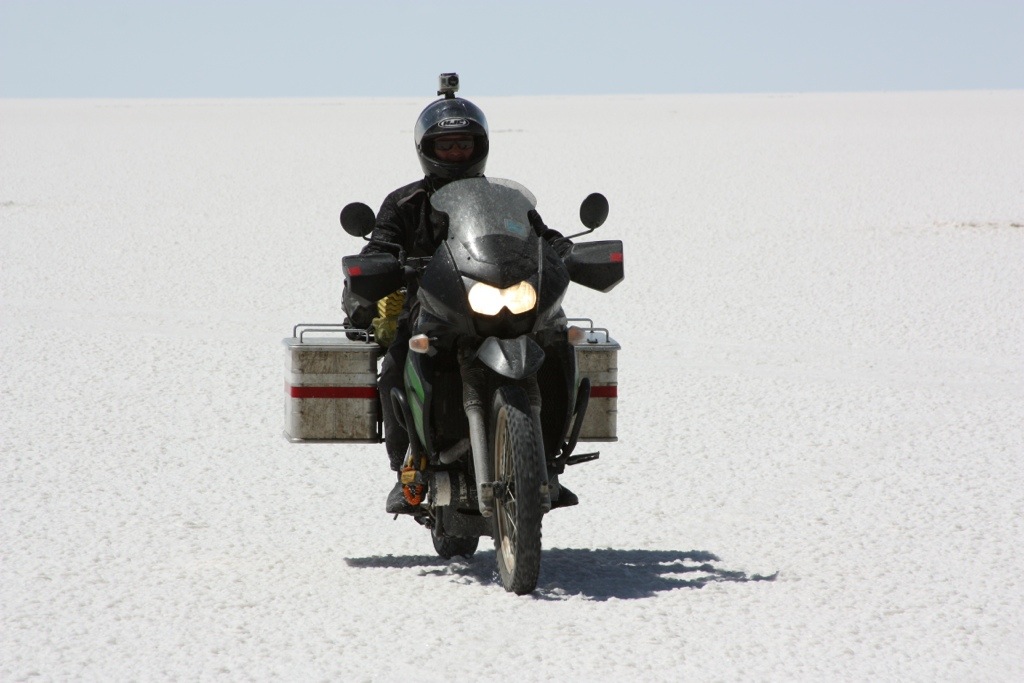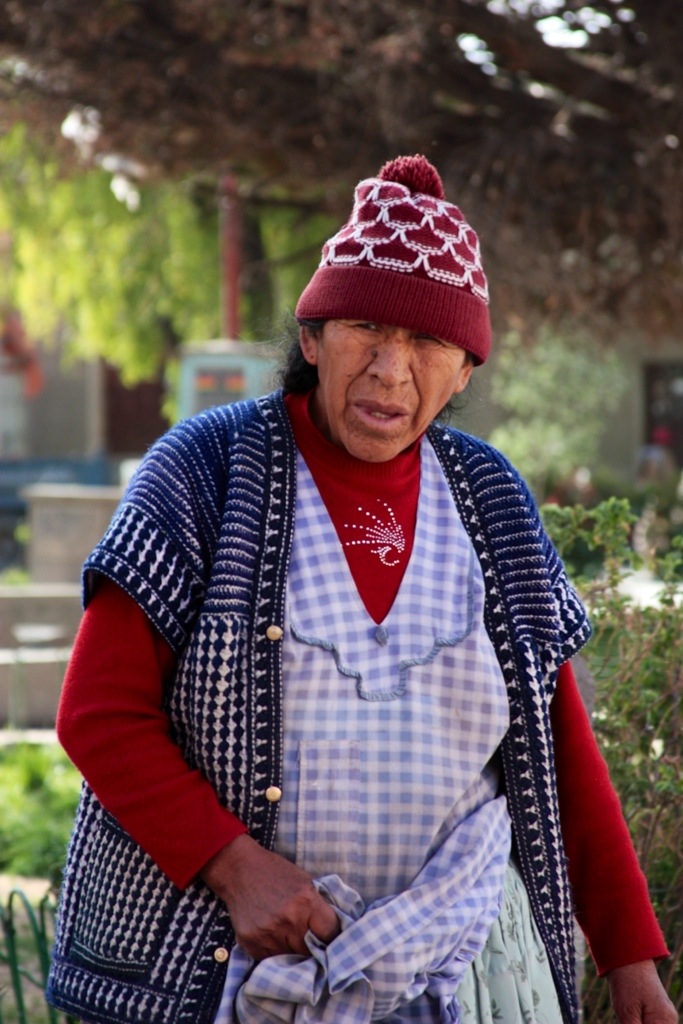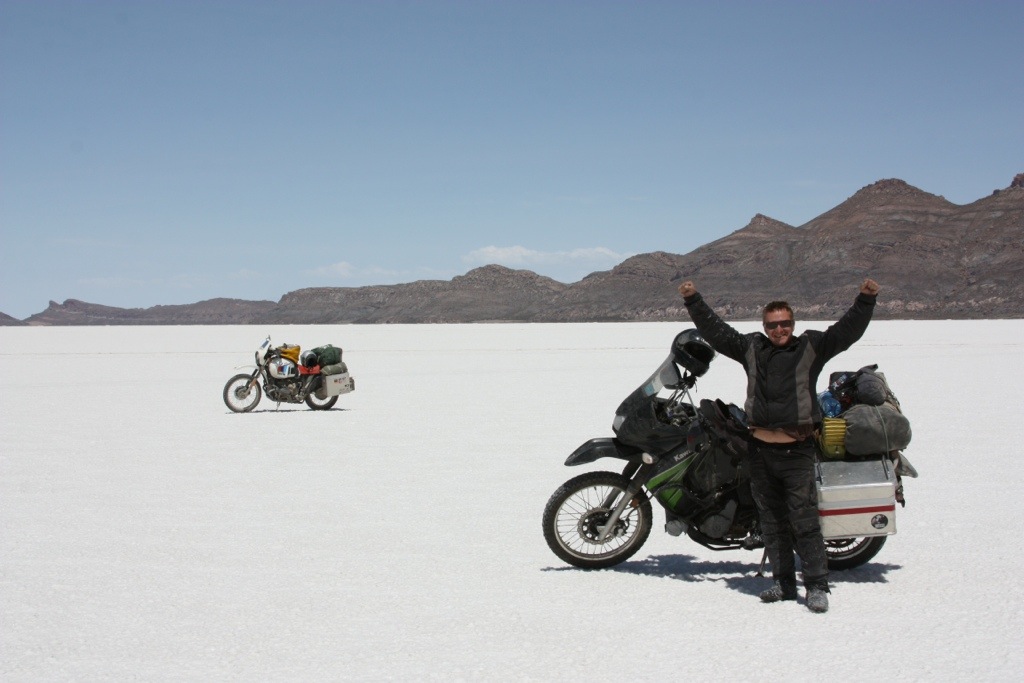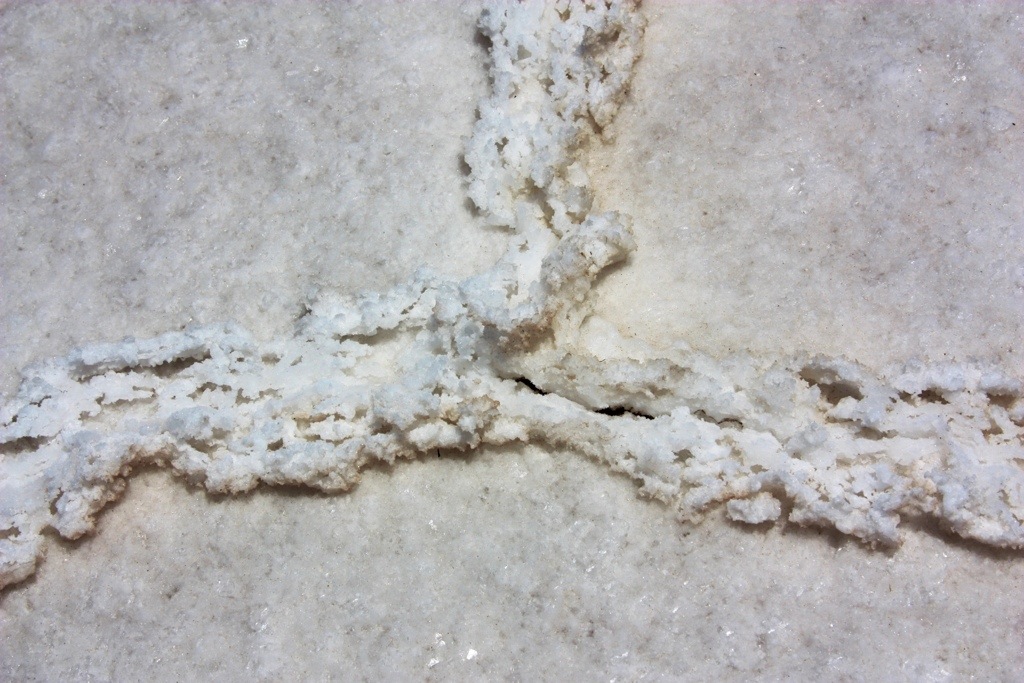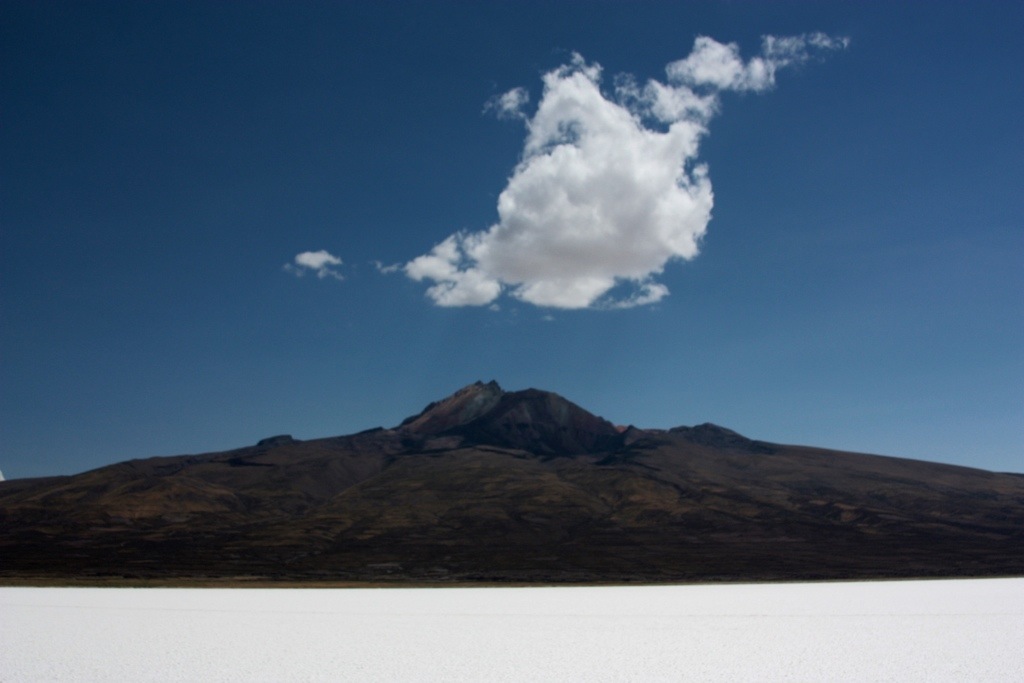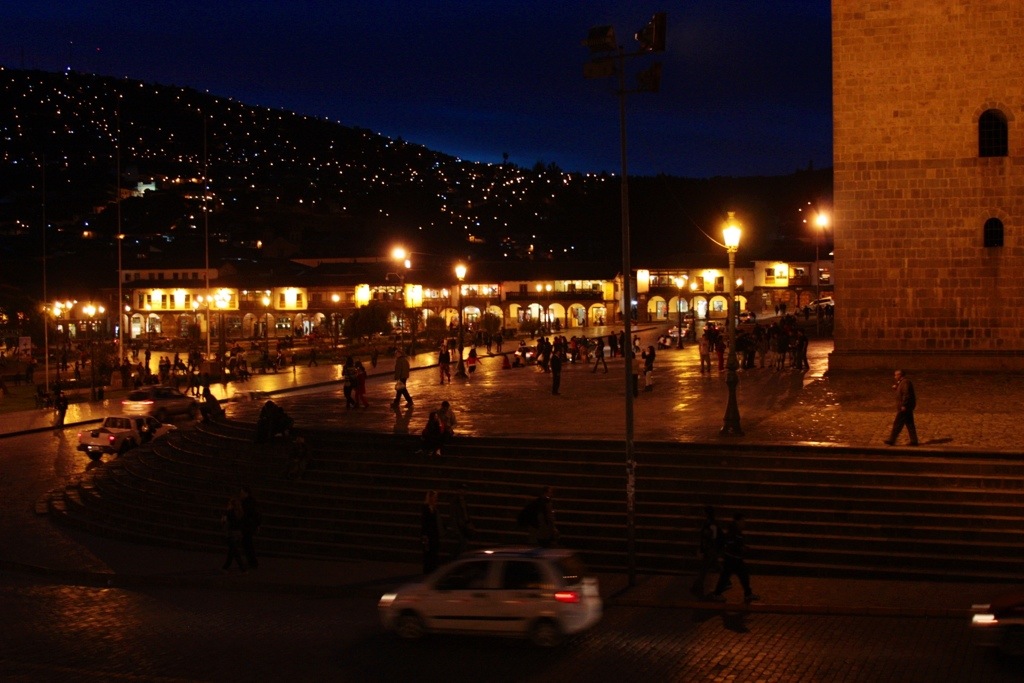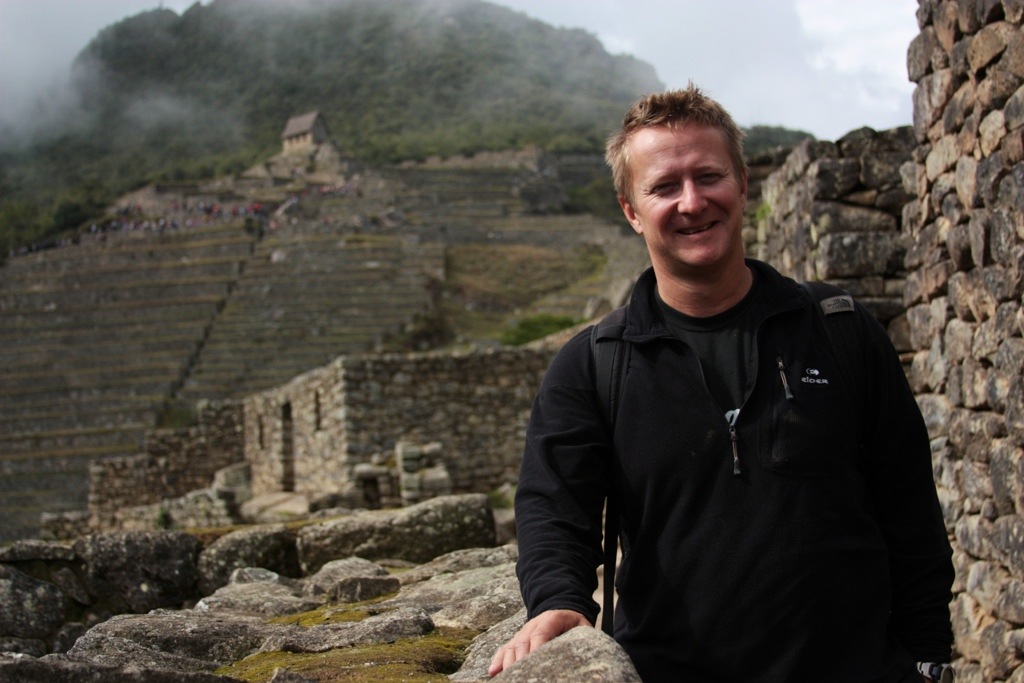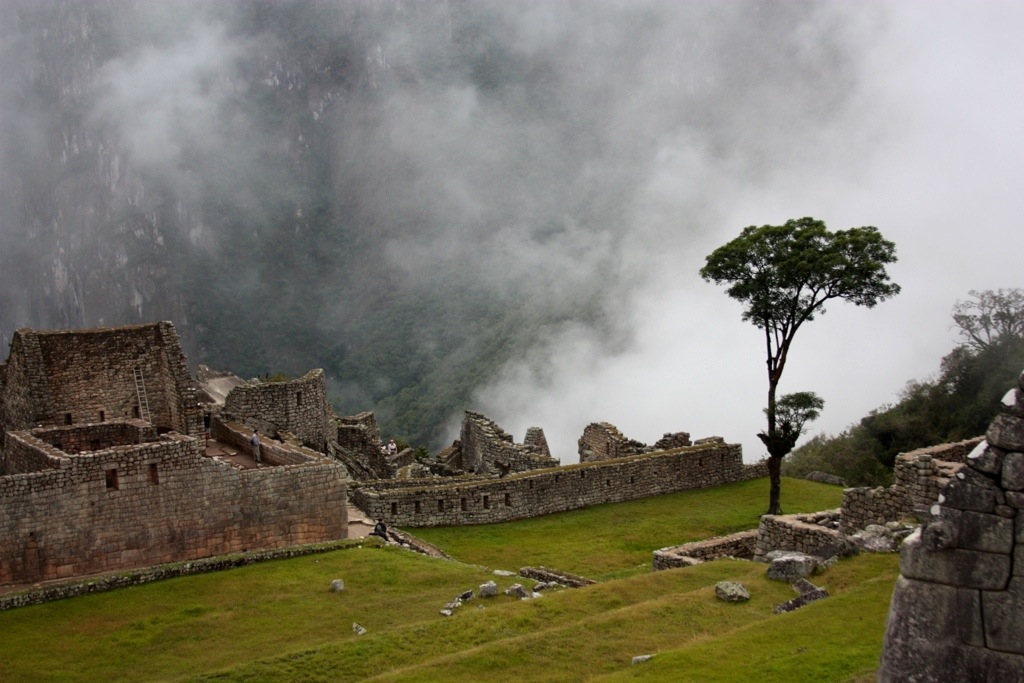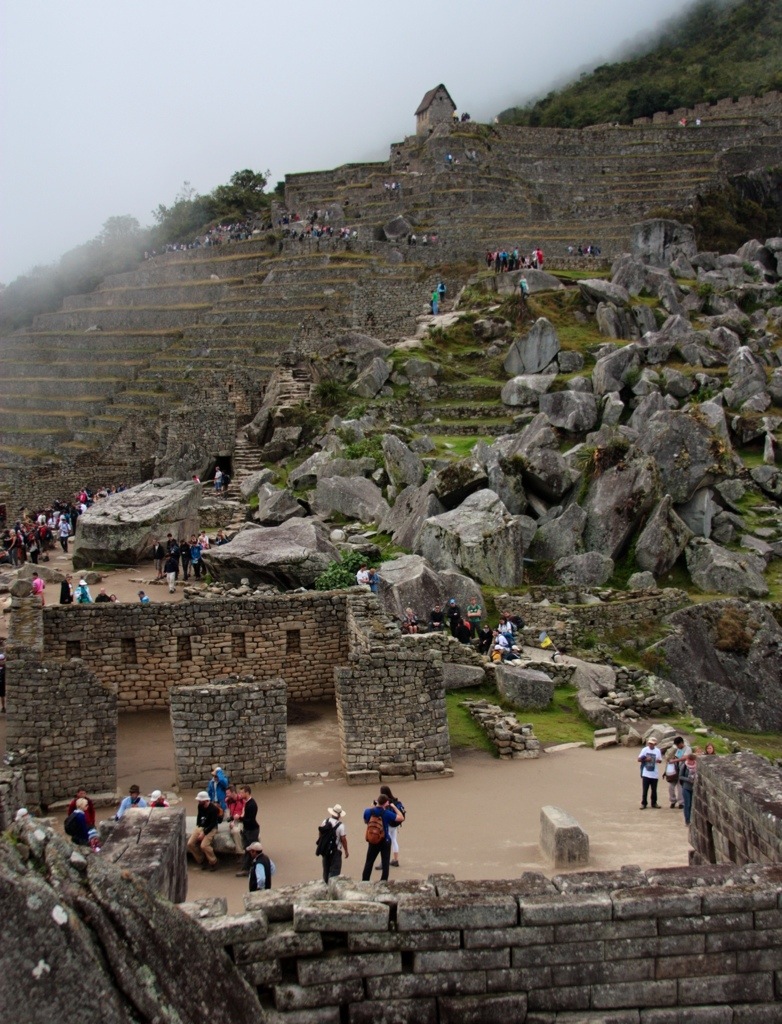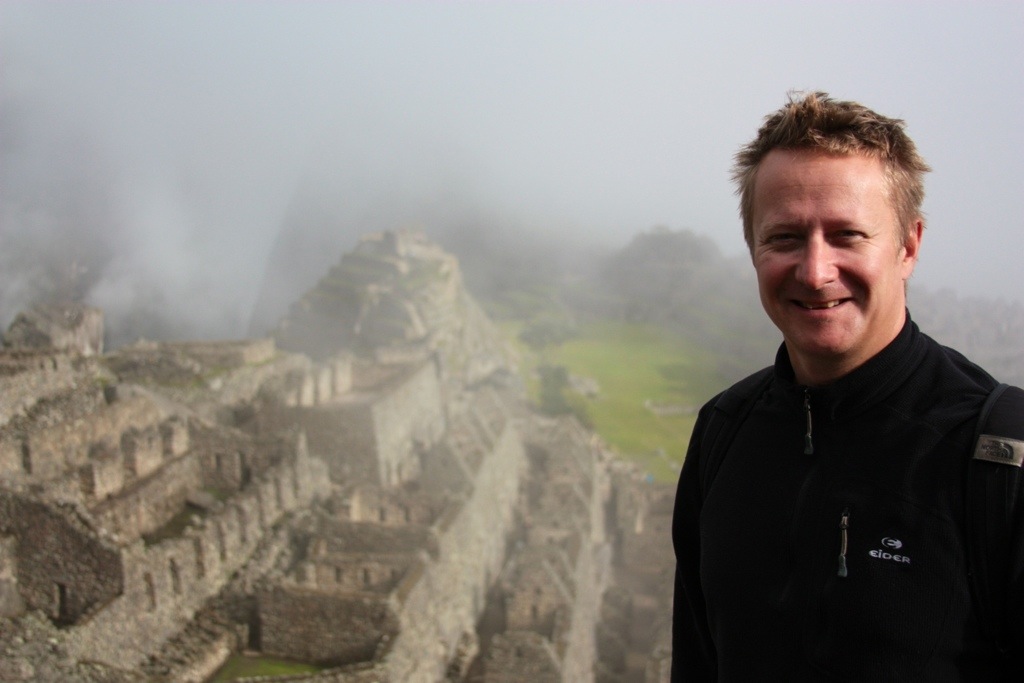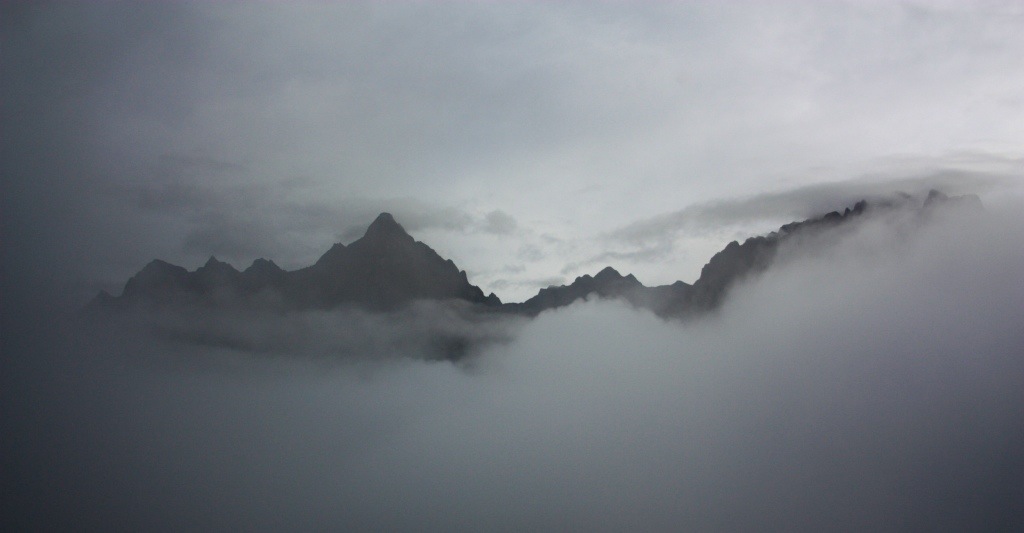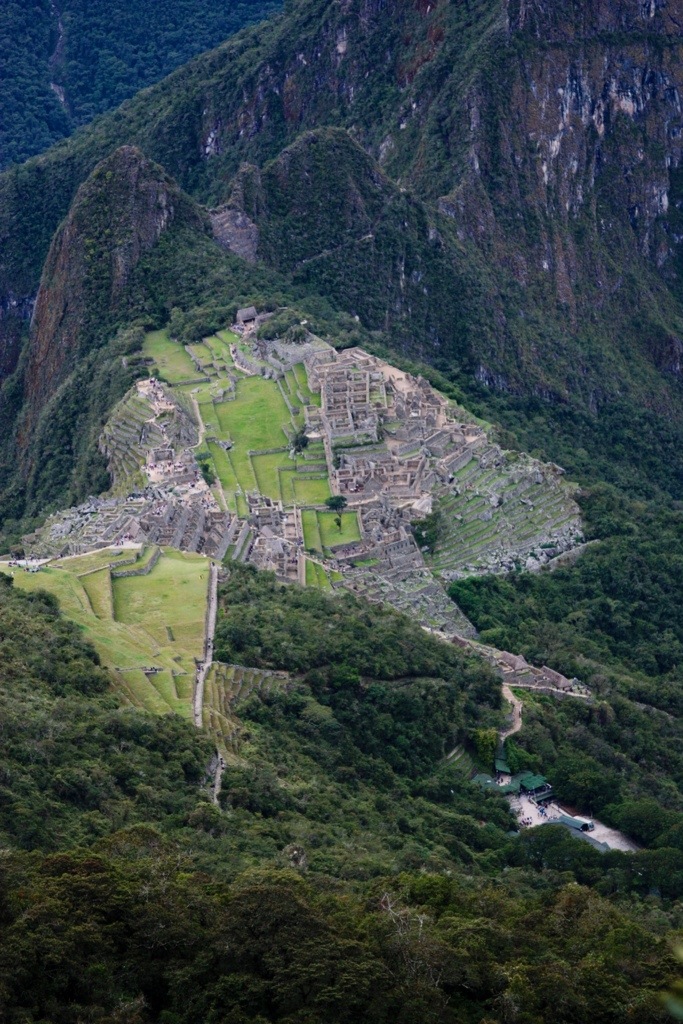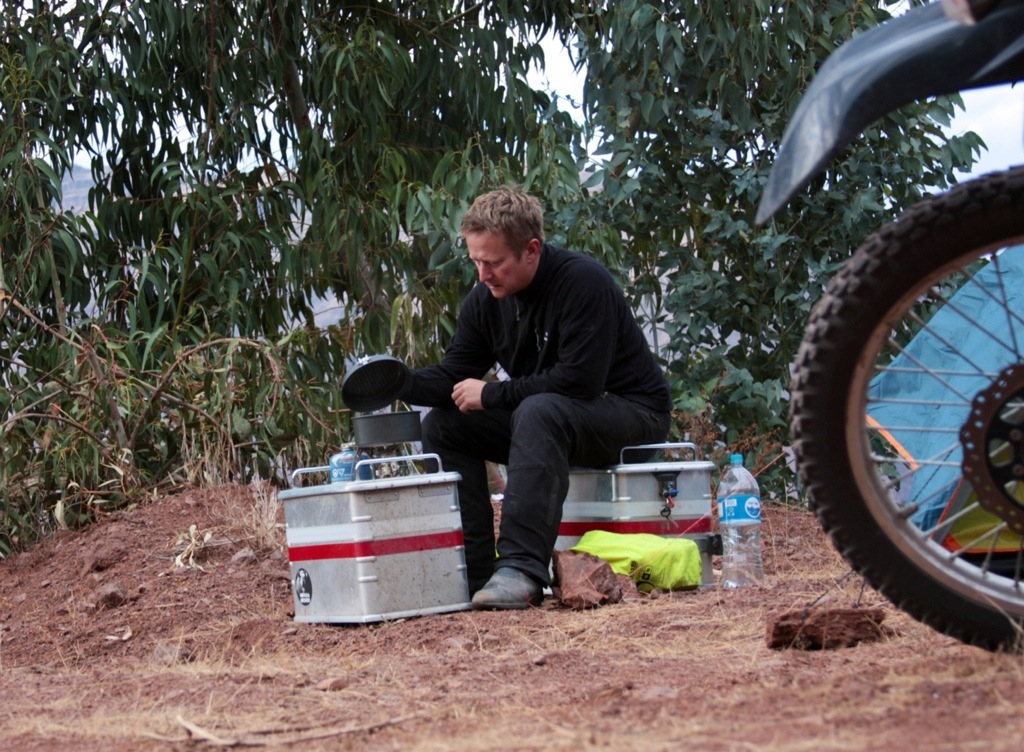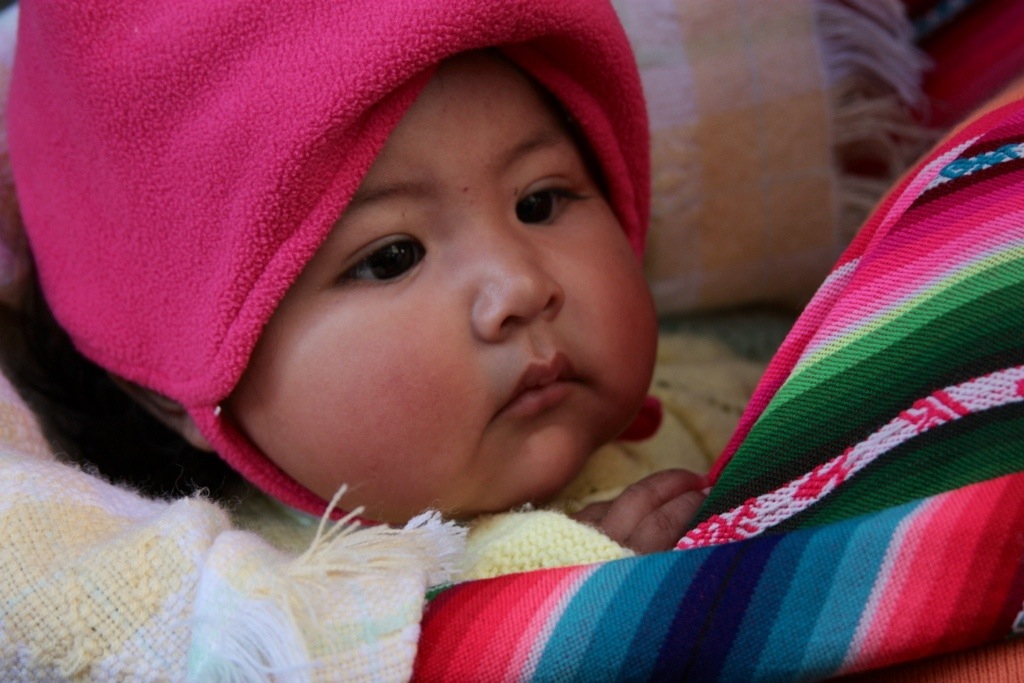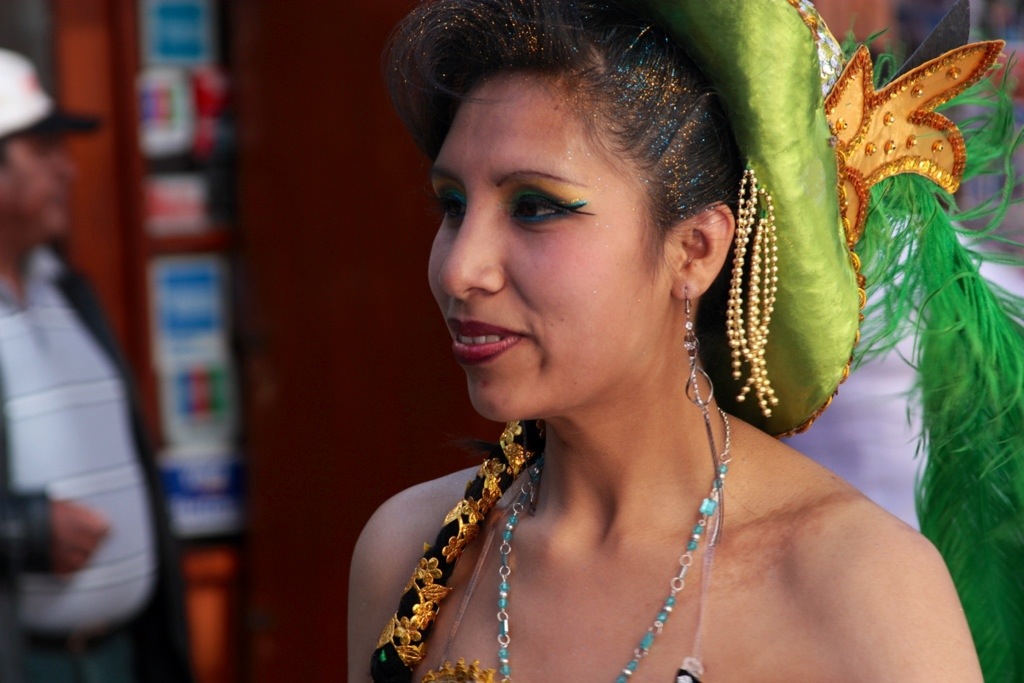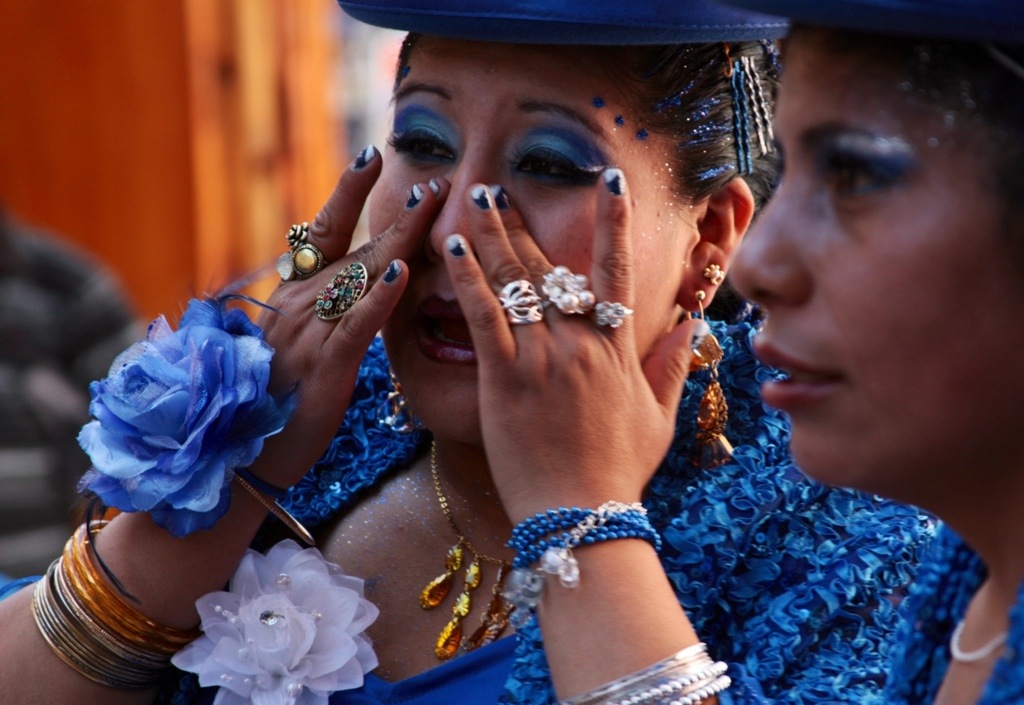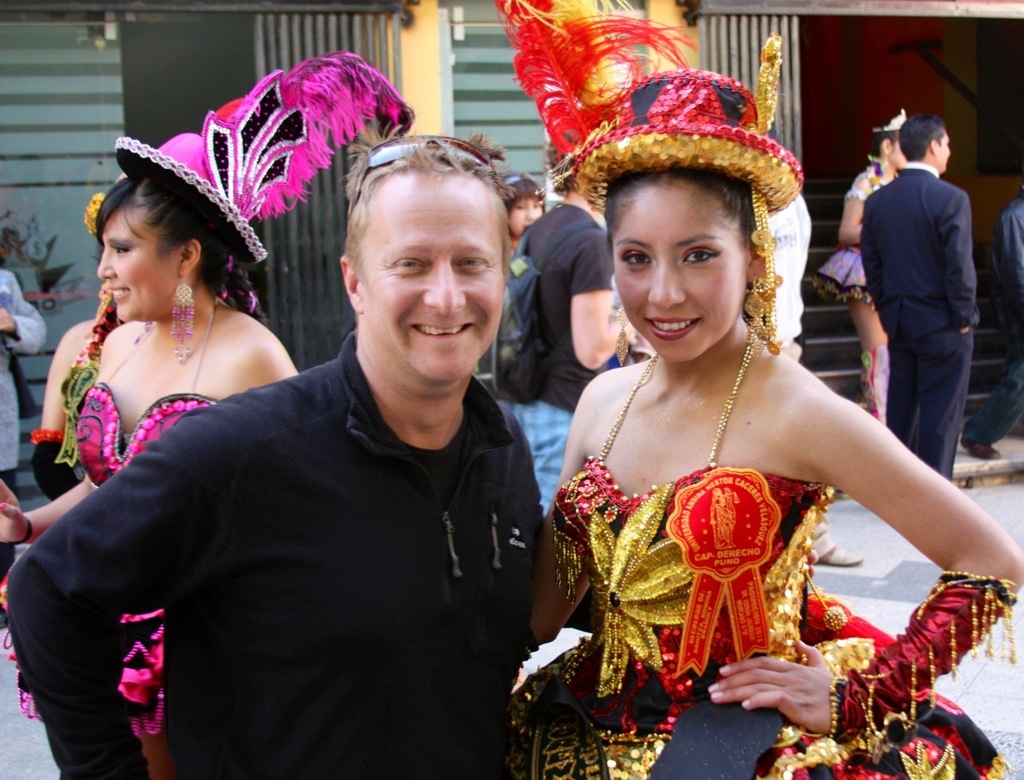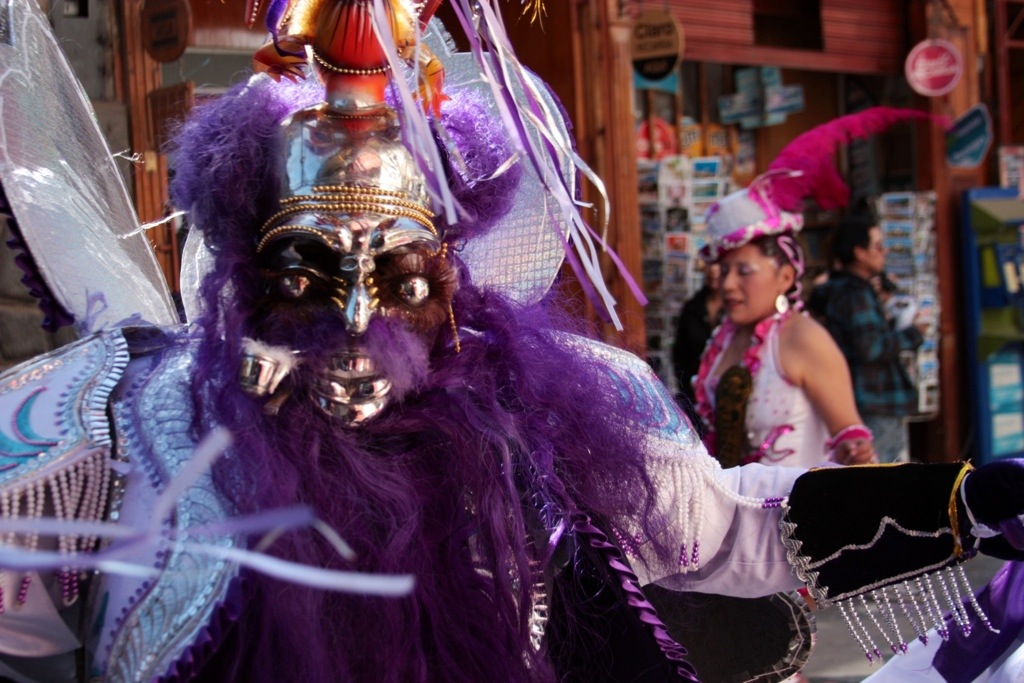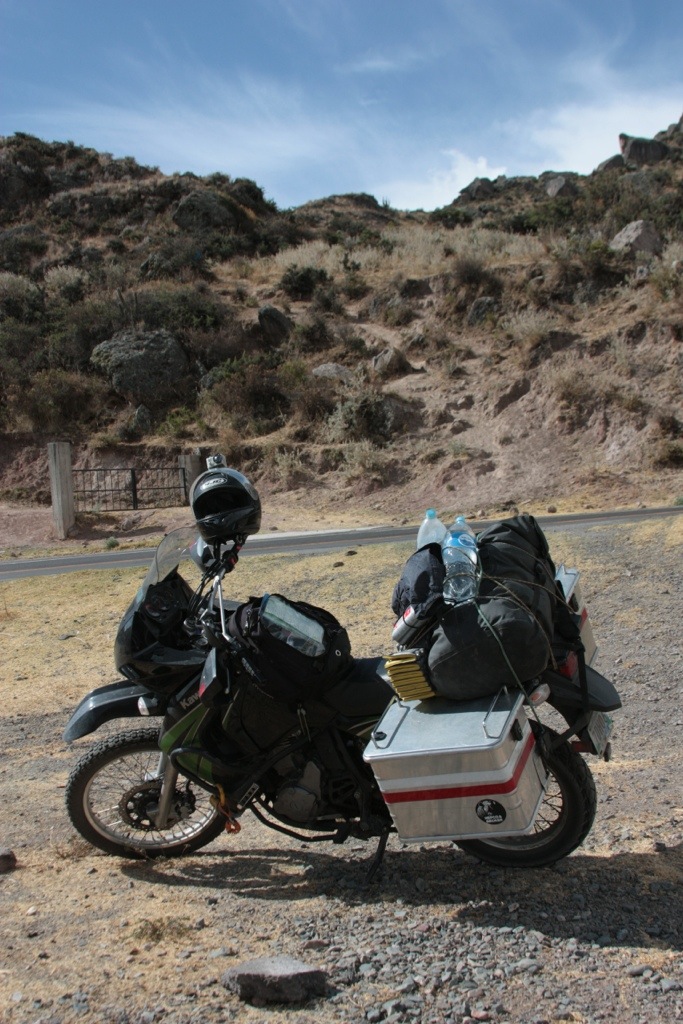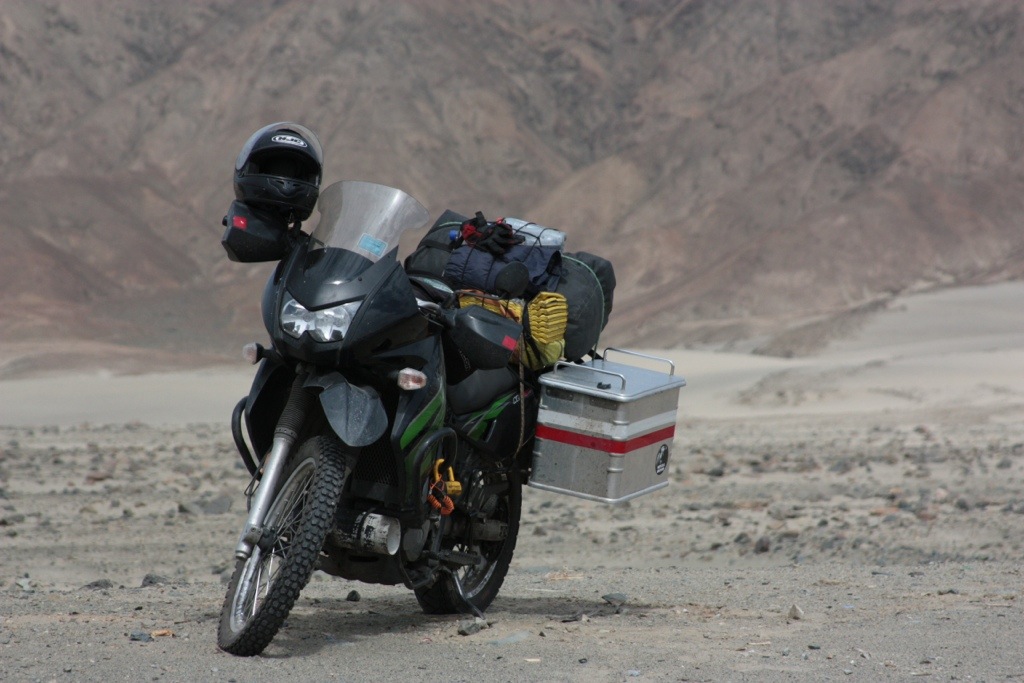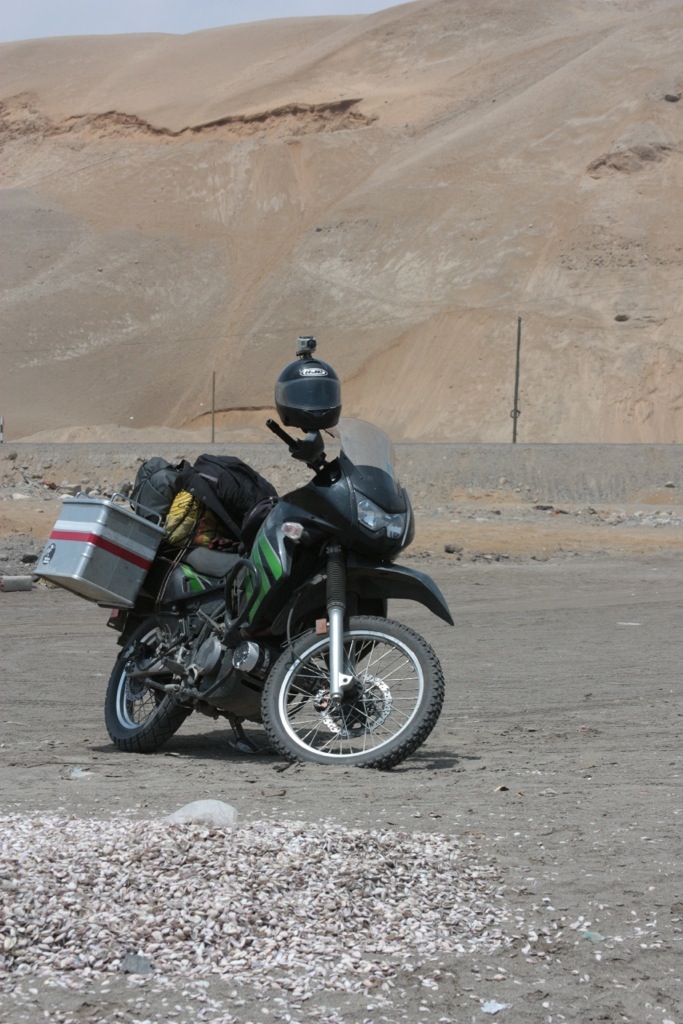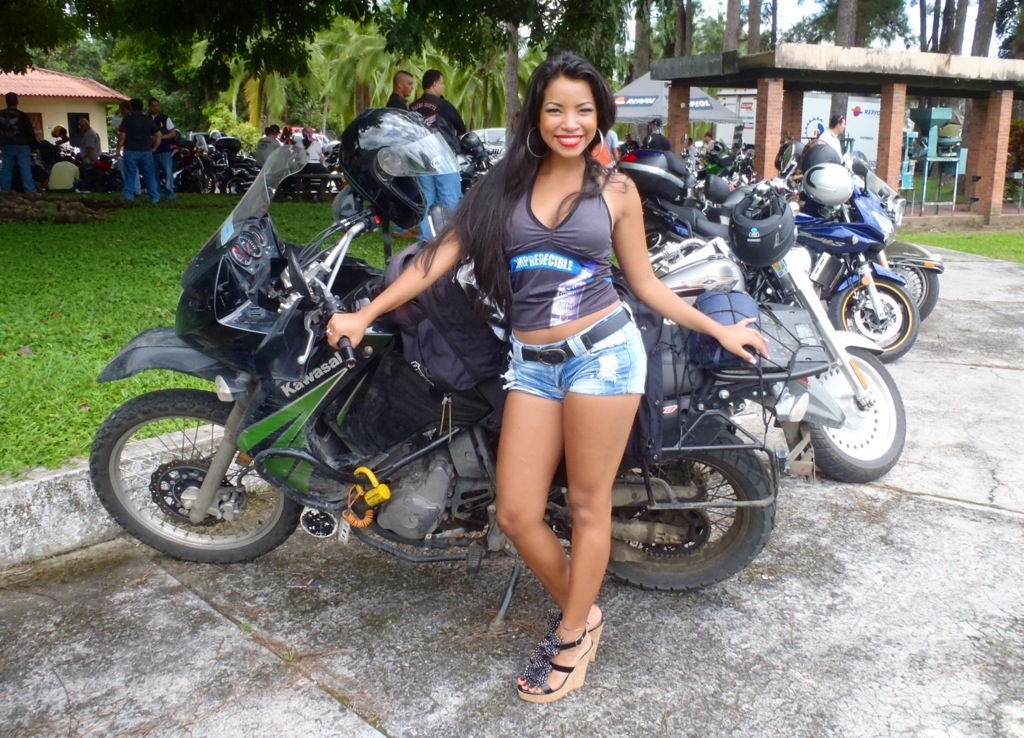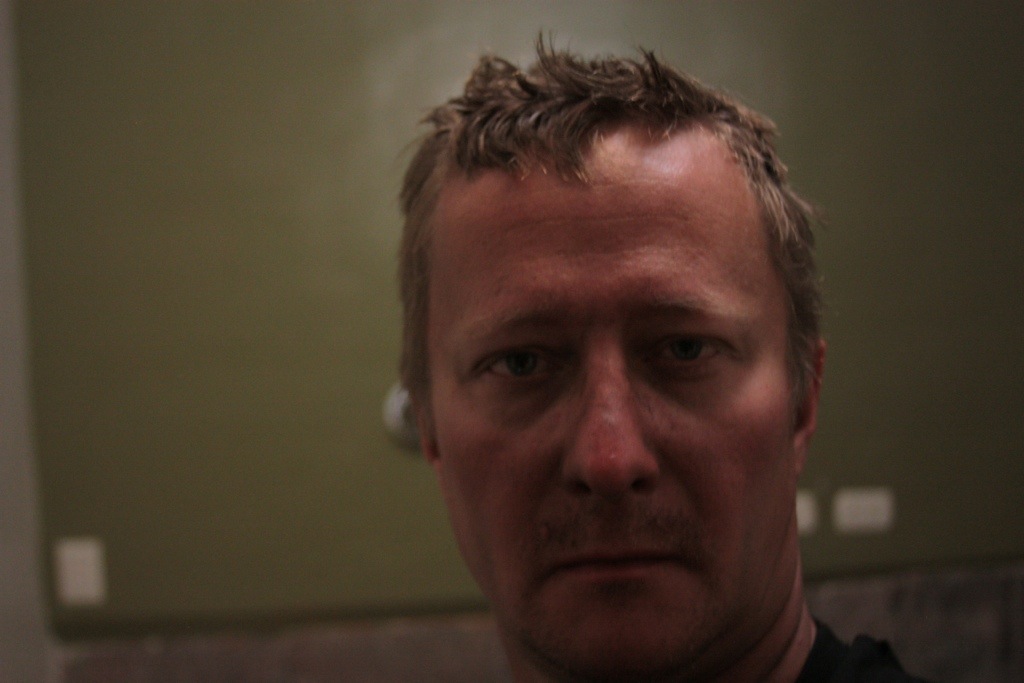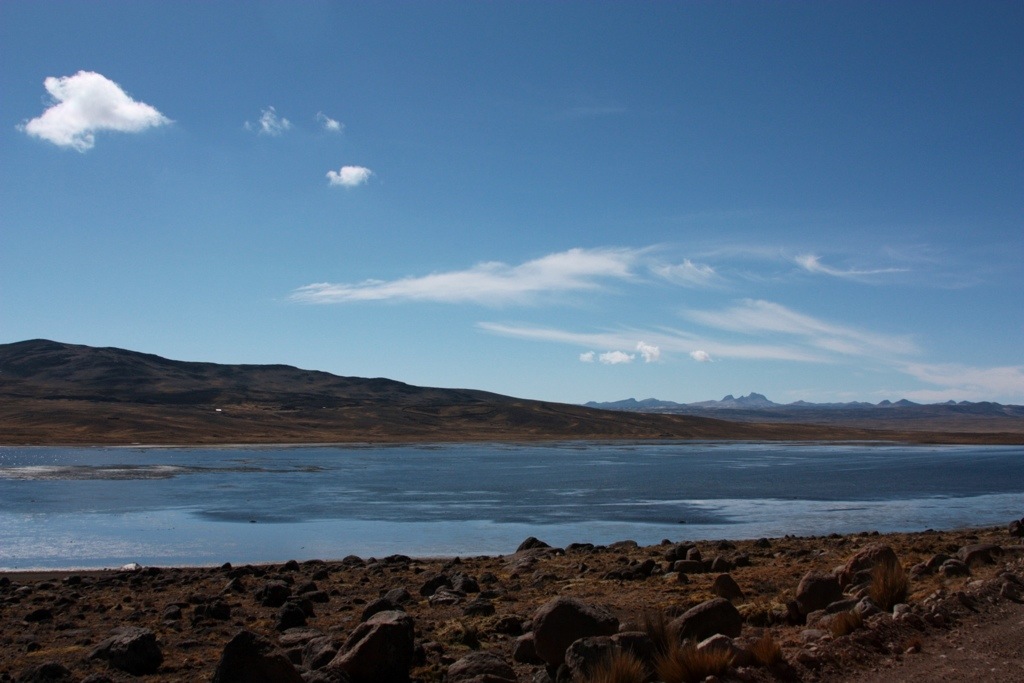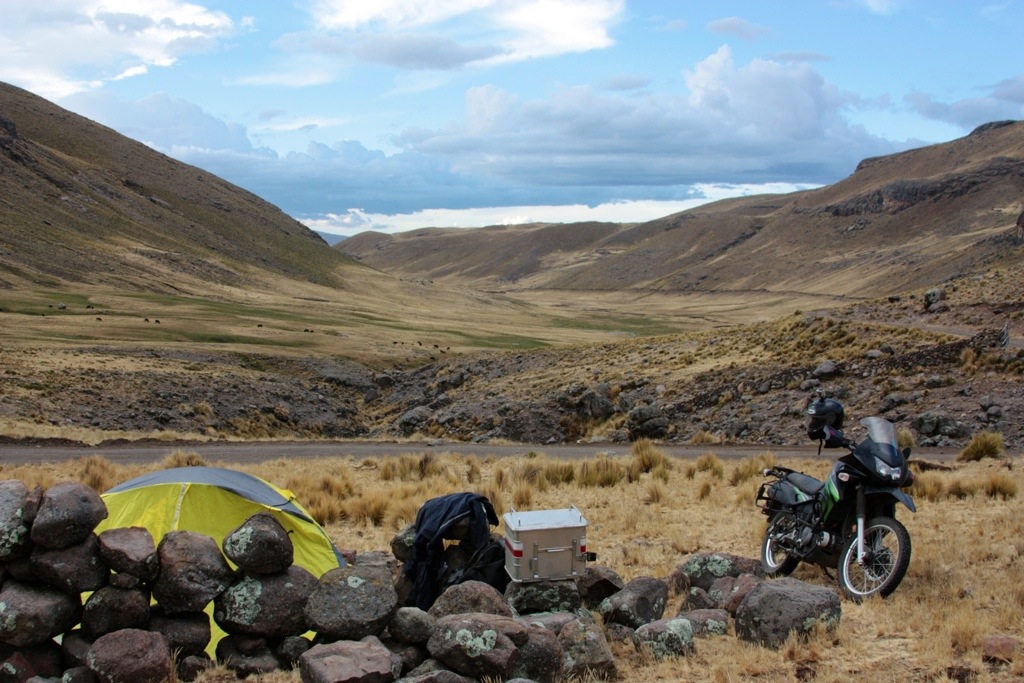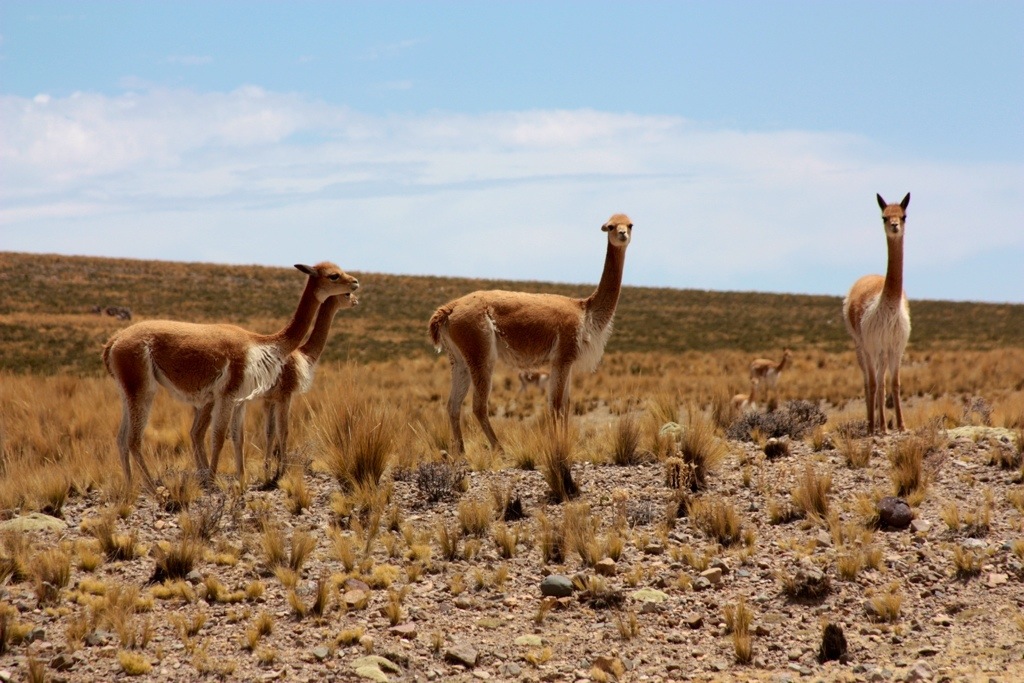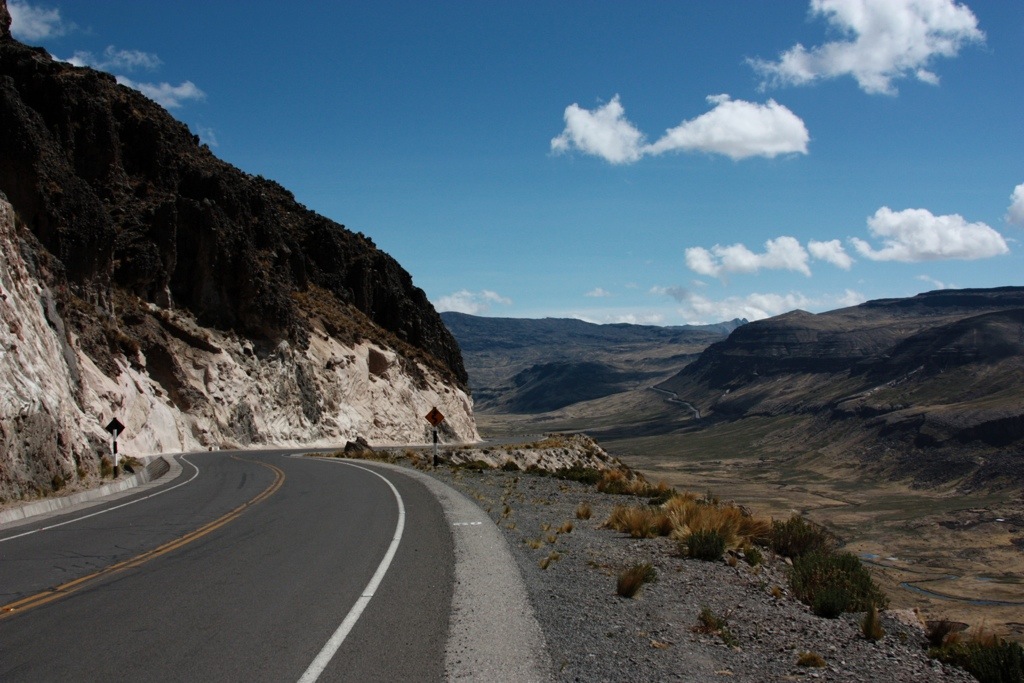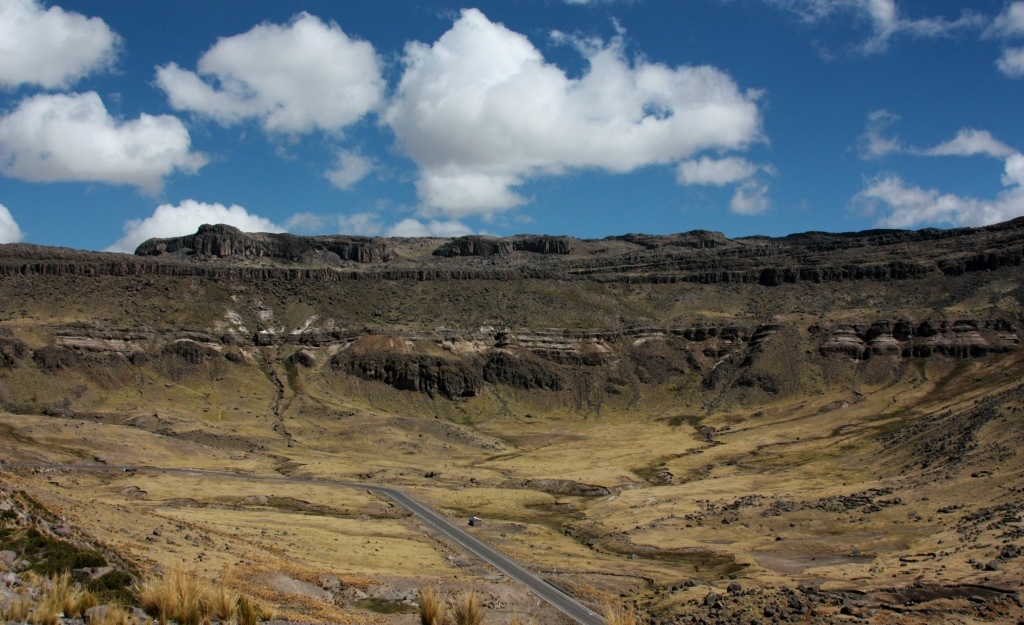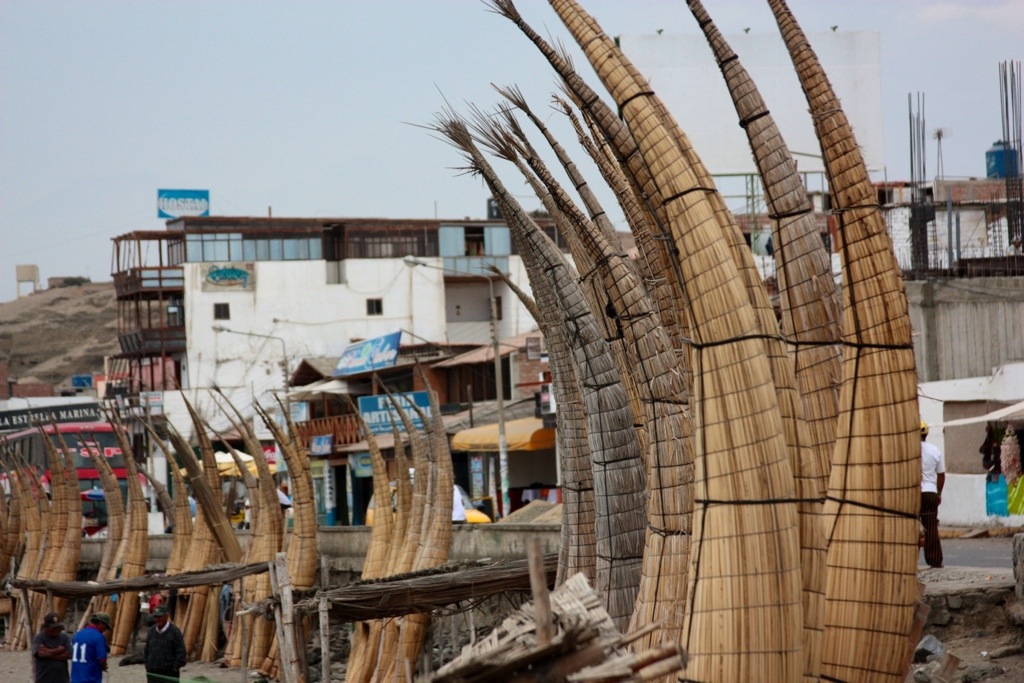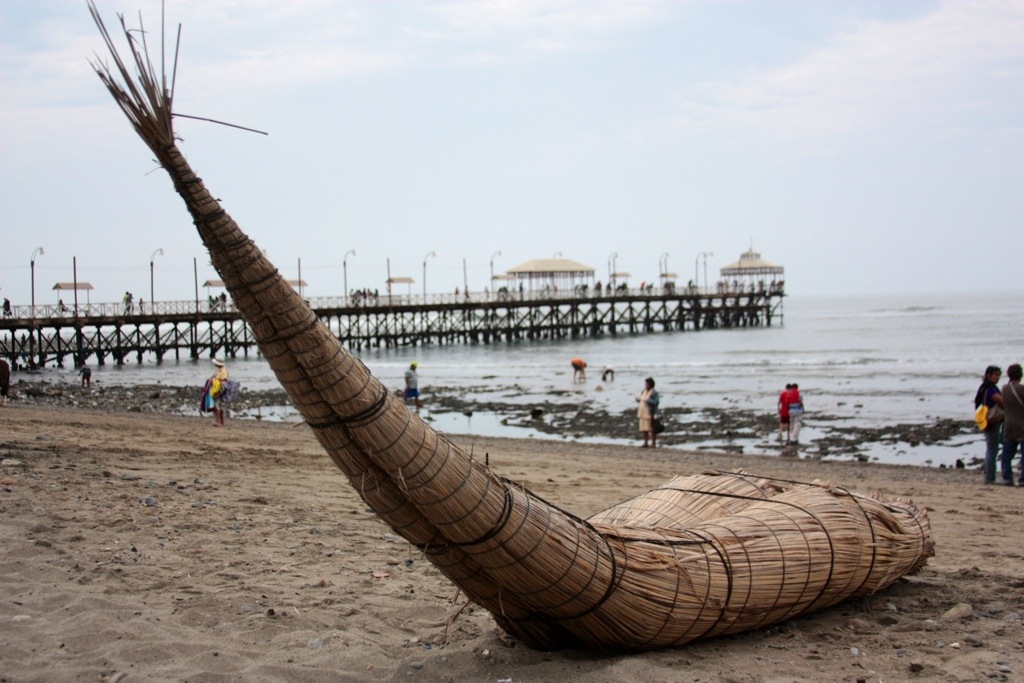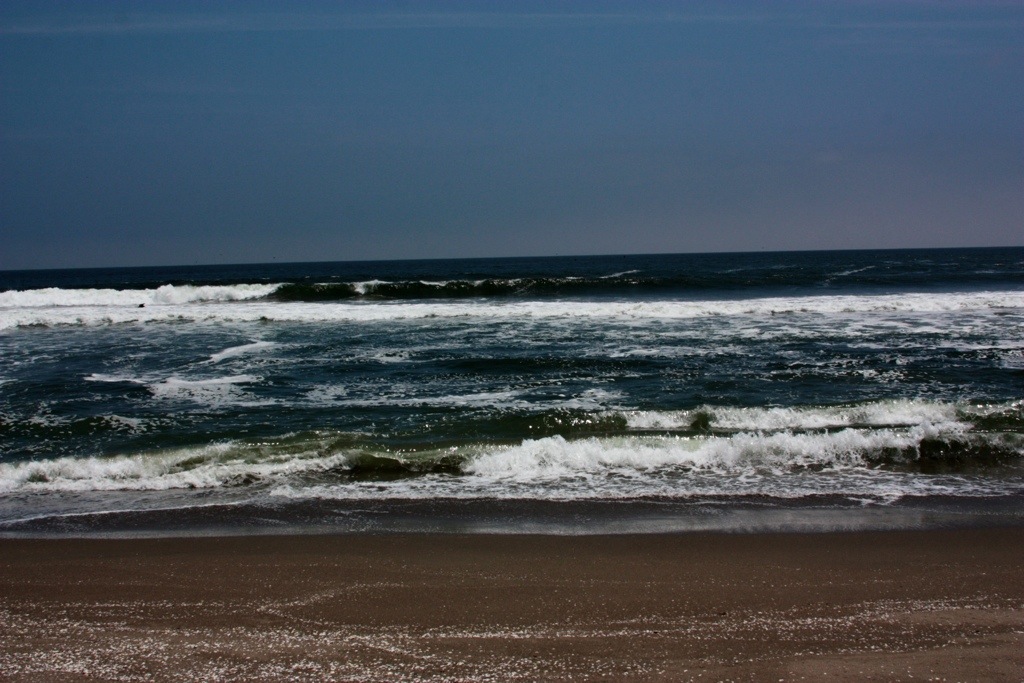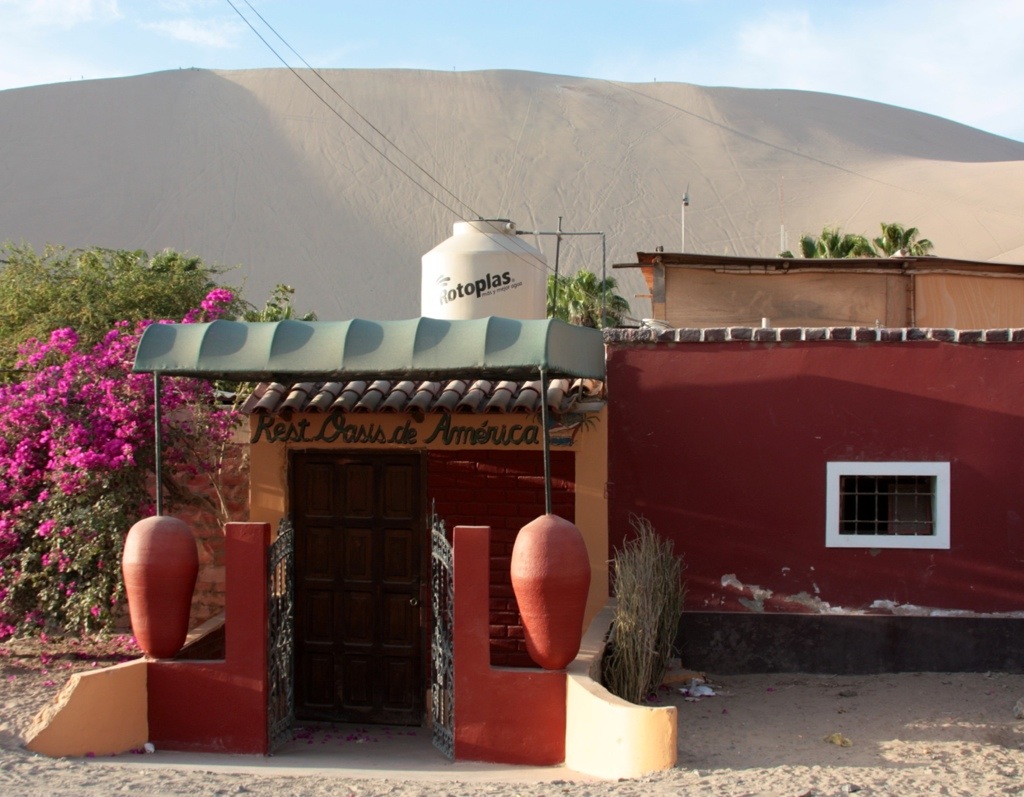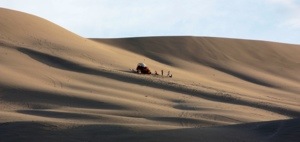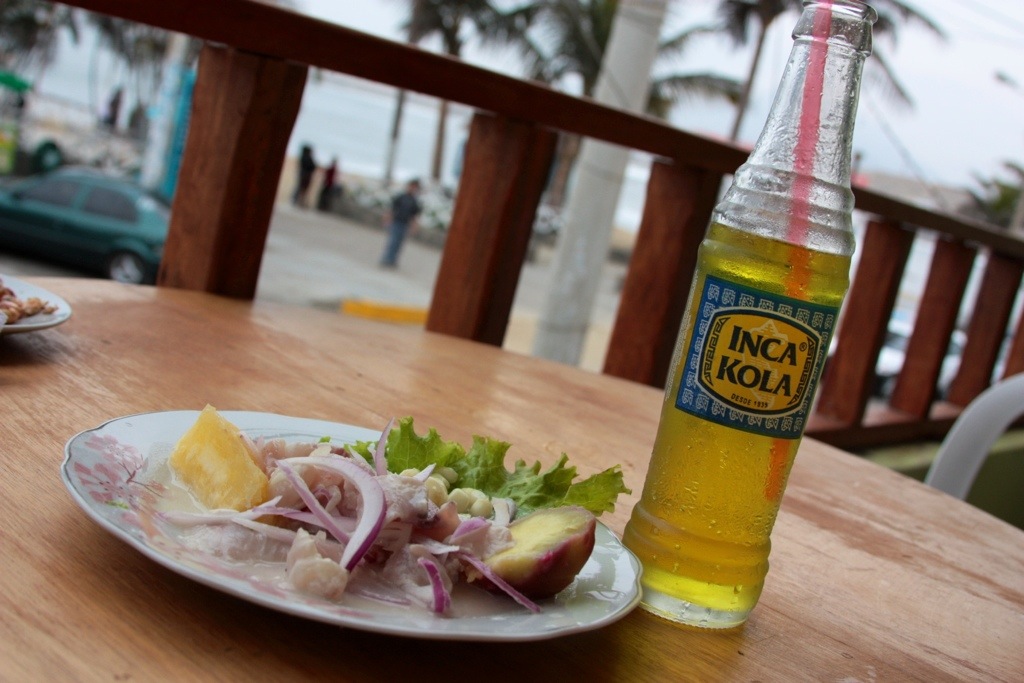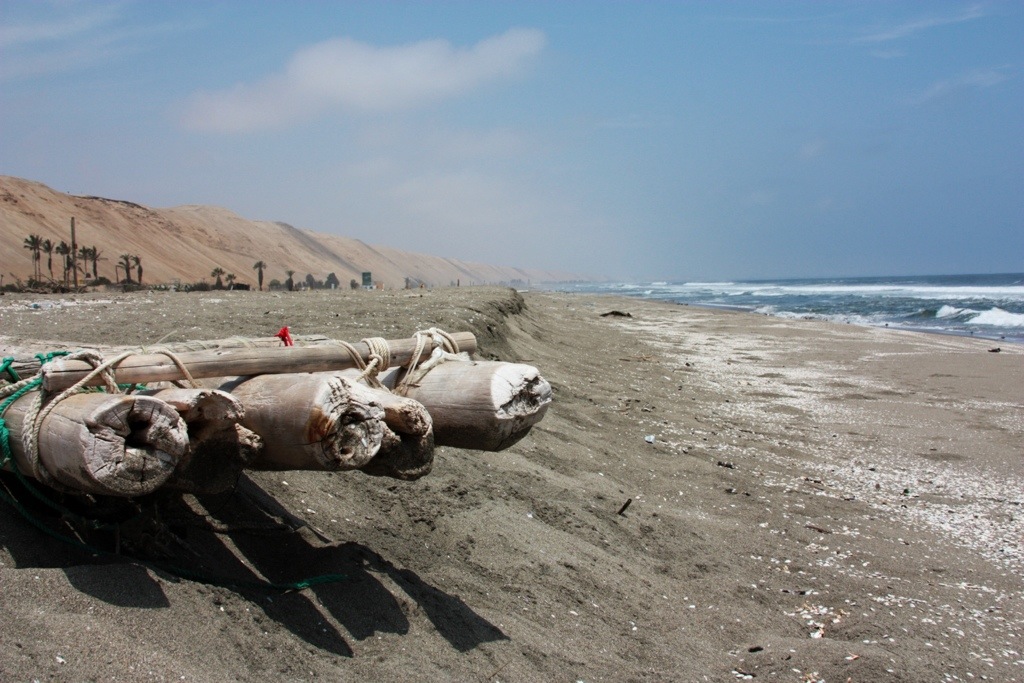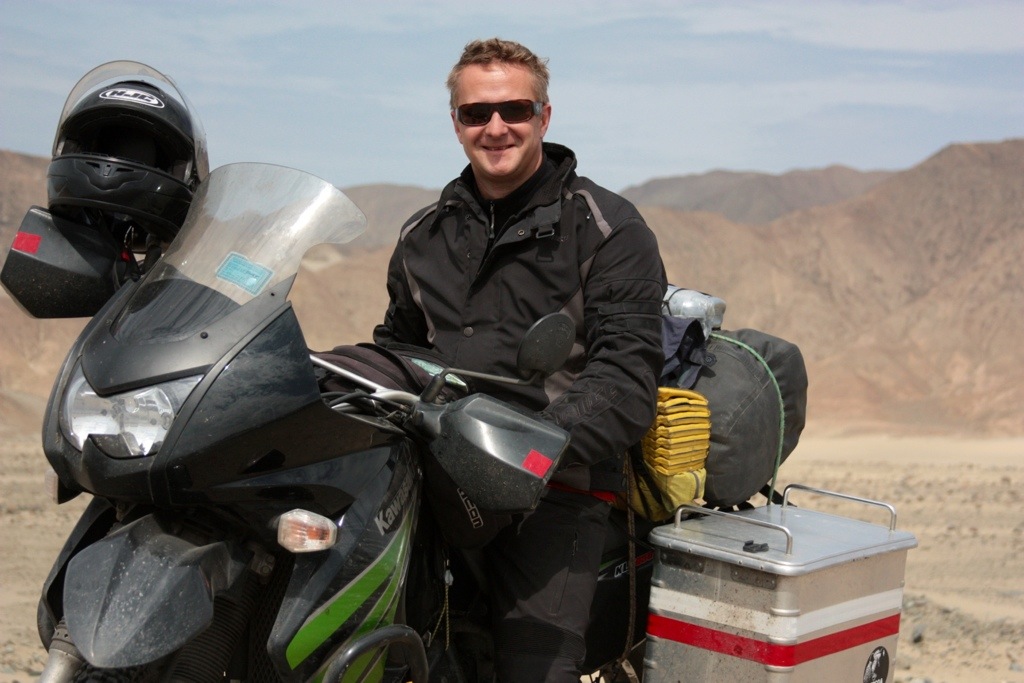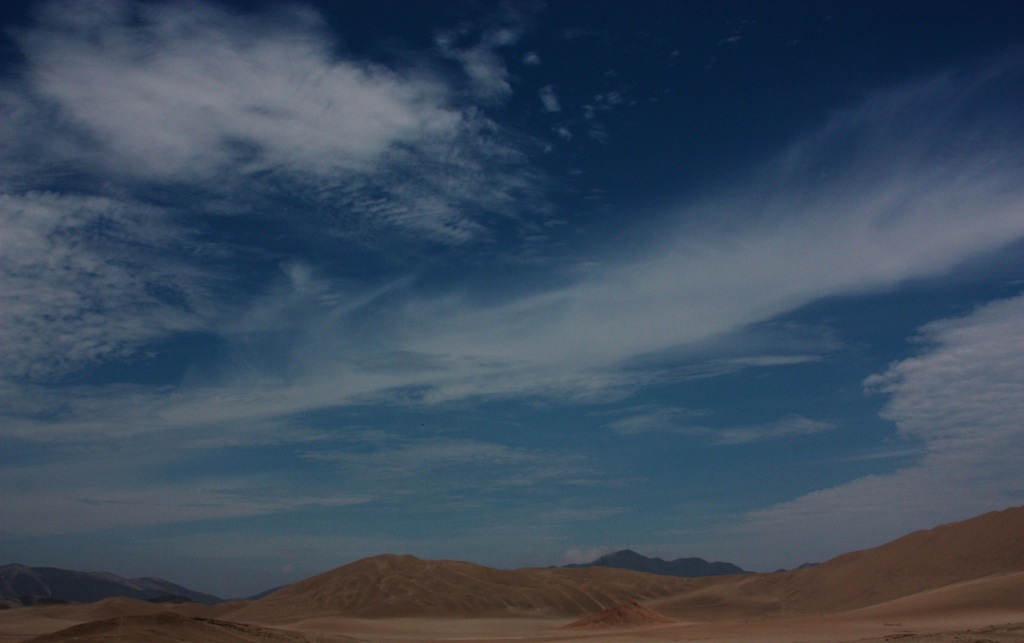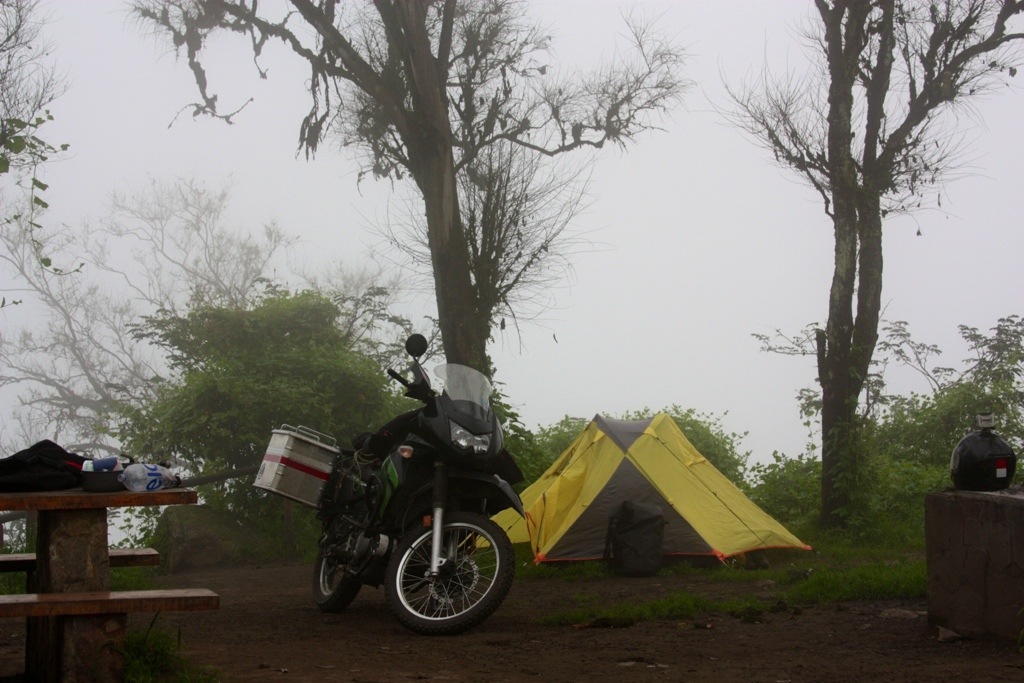Here’s my story about nesting Costa Rican turtles, as it ran in the South China Morning Post. Click on the links to download the pdf.
Category Archives: Menno Moto
Curitiba, Brazil
I entered Brazil three days ago, though it feels like a week. This is the 16th country I’ve been in on this journey. The change from Paraguay was immediate and huge. Brazil is clean, pretty, green, civilized and wealthy. I like it, lots, although I am back to square one in terms of understanding what people are saying. Learning a bit of Spanish hasn’t done me a lick of good in understanding Portuguese.
I had my first major accident of the trip shortly after entering Brazil. A truck was stopped on the highway. A car in front of me blocked it from my view. The car swerved to avoid the truck at the last moment, leaving me with only meters of braking space. I was doing about 100km/hr and had only a split second to lock my brakes, so I estimate I was doing 70 km/hr on impact. My last thought was “This is gonna be a big crash”. But I got up immediately after everything stopped moving, and thought “Hmm, that wasn’t so bad.” I have not yet figured out the physics of it. The truck was pushed forward by the impact. This picture doesn’t show it well, but the truck bumper was torn clear off the frame. There was significant breakage/bending of the metal/frame. My bike suffered only some broke plastic on the fender and faring. The forks/wheel/handlebars are straight and true. I can’t figure out what absorbed all the force, and a witness on the scene was as puzzled as I was, as were the cops, EMS people, the driver of the truck, etc. I woke up VERY sore the next day, and I still am feeling like I was beaten with a lead pipe. But nothing was broken. Yes, I’m a lucky man. I have no collision insurance, so I had to pay the guy about $180. I could have just driven away (even the cop told me that) but that didn’t feel right, as technically it was my fault (although he was an idiot for parking on the highway like that). Life goes on.
A few bikers pulled up and helped me get my bike back on the road and negotiate the payment, etc. Thank you Volnei and Marcel!
I spent my first night in Brazil camped in a soya bean field. I look rather proud of myself.
The next morning I rode into Curitiba, Brazil. As I entered the city I passed a Kawi shop, so I stopped to say hello. They offered to give my bike a proper wash, and then they escorted me to a cheap, clean and cheerful hotel in the center of the city. Thank you Rhino Motorcycles.
Curitiba and the surrounding area is home to about 8,000 Mennonites, most of whom came from Russia/Ukraine/Siberia in the 1930s. This is Maria Duck (nee Kroeker), who fled Siberia at 5 years old, crossing the Amur River into Northern China and living in Harbin for about 1.5 years before finding her way to Brazil.
Witmarsum (named after Menno Simon’s birthplace) is the biggest colony. A lovely little village filled with intelligent, educated and open-minded Mennonites who have embraced Brazil as their home, at least the ones I met. Mennonites have a long and rocky history of resisting change, but in this case here I sensed a good balance of pragmatic acceptance of the onward march of time and continued pride in their Mennonite history.
Lena Harder is 83, and fled Siberia when she was 1 year old. She worked in the Witmarsum hospital for years, and now runs the museum that is housed in the same building. I asked her what she thought would become of Mennonite culture in her area. “Few kids these days can still speak Low German, they all speak Portuguese. But it will continue to exist here for a few more generations, I’m sure of that. It’s just part of life, we live in Brazil and we have to change and adapt to the culture around us,” she said.
Loma Plata, Paraguay
I spent more than a week in Loma Plata, Paraguay. This colony was created by Mennonites who left Canada in the 1920s when the Canadian government said they had to start teaching their children English in school. They had a brutal first few years carving farms out of the “Green Hell” of the Chaco. Today it is a fairly open, forward thinking colony (with Spanish as the main language in school), though many of the stereotypes still hold true. They are still struggling to come to grips with being a part of Paraguay, rather than just having a mini-state within the country. It’s the biggest colony in Paraguay, and they have become very rich through farming and industry. They are descendants of families that came to Canada from Russia on the same ship my great Grandfather came on in 1874.
It was election time when I was there, and Andreas Neufeld is the outgoing president of the co-op, which runs just about every big business in town. It has annual revenues of $750 million. He has some interesting views on what Mennonites need to do to survive, many of which included more cooperation with the national government and better integration with Paraguayans. I agree.
These two dudes at Classic Moto helped me fix my leaking “chjiela” (radiator), put on a new tire and make other small repairs to the bike. Thank you Randy Fehr and Dorien Funk for the laughs, mechanical help and gallons of tereré you served me across this counter.
The old Explorers Club flag and I in front of the first Mennonite church in LatAm, in Loma Plata, Paraguay. I told the club the mission of this “flag expedition” was to get a sense of what modern Mennonite culture is. I think I’ve got a pretty good idea by now.
Helmut Neufeld and David Fehr spent a day showing me Menno Colony and a few historical spots in the area.
The next day I drove to Porto Casado with Rudy Harder (above), David Fehr and his brother Peter. This is where the Mennonites first arrived in the Chaco. We visited the cemetery, where the men found some of their relatives that didn’t survive the trip.
We ended the day by fishing in a Chaco pond. It was a lovely afternoon of fishing, eating, and telling stories. This is David Fehr.
Peter untangling his line…
This is just after Rudy put his trousers back on. He lost his line in the pond, so he had to strip down to his undies to retrieve it. I didn’t take any photos, but we gave him a pretty hard time for it. I think they had blue polka-dots on them.
A cookout over the fire, where David whipped up a giso (below). I’m told it’s an institution among Chaco ranchers, and I ate it several times while I was there. Very tasty.
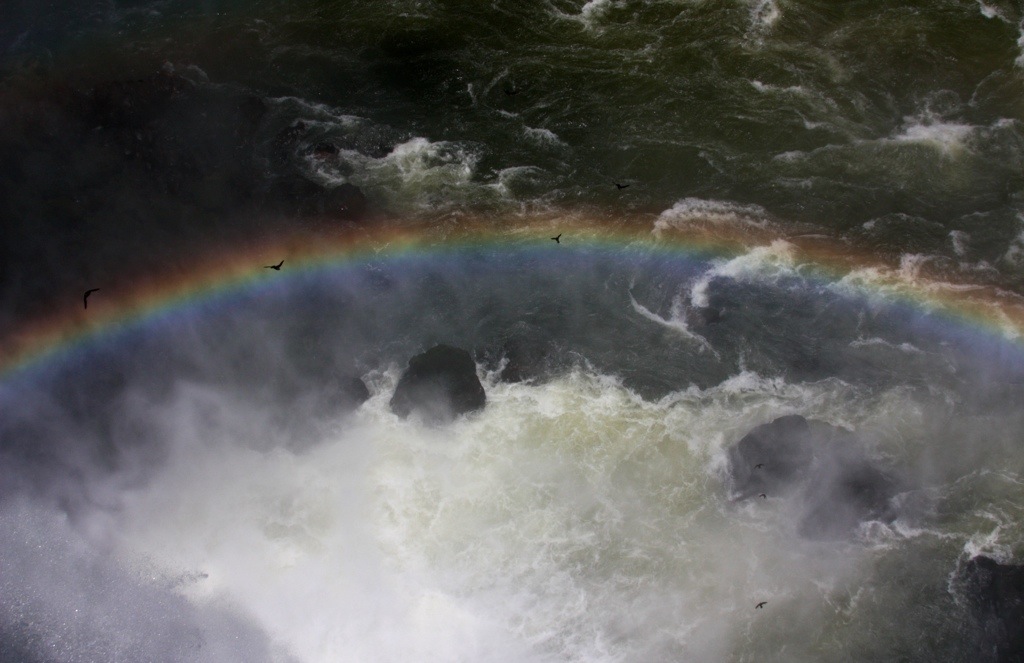
The first time I entered Brazil, in 2004, I did so illegally without a visa. I was caught and sent packing. I did it again on this trip, sneaking across the bridge from Paraguay to go see Iguazu Falls and then crossing properly the next day, since I only have a single-entry visa. And when I got to the falls…a rainbow!
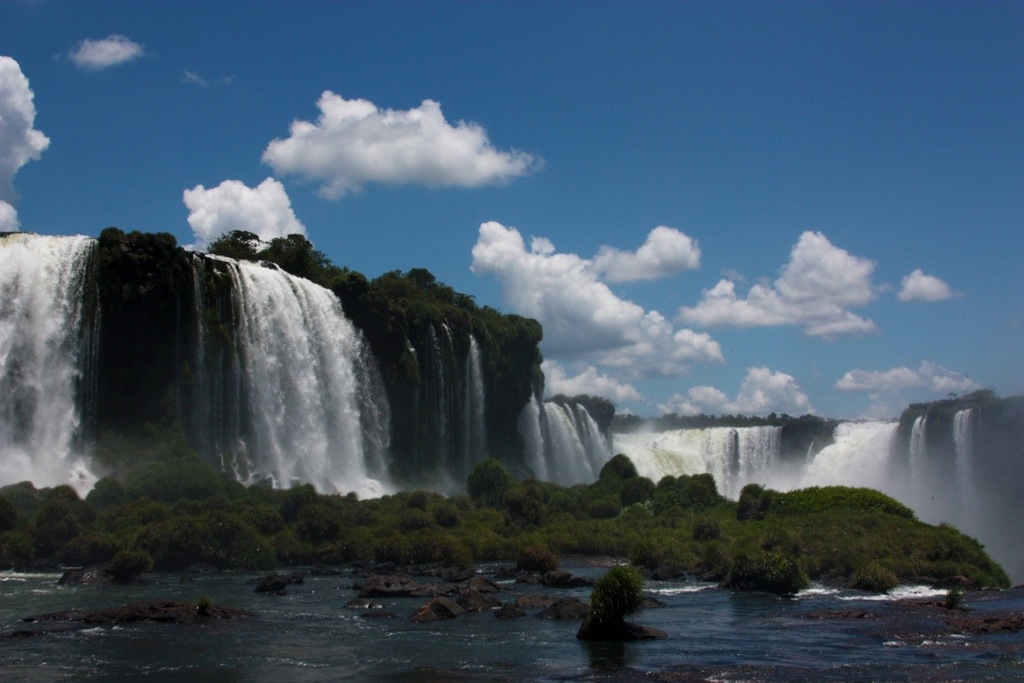
Estancia
Yesterday I spent the day with brothers Herbert and Werner Bartel as they inspected part of their 8,000 hectare (20,000 acre) estancia in the middle of the Paraguayan Chaco.
Herbert and Werner (L-R). They live in Loma Plata.
Herbert Bartel
One of the ranch hands. He grew up with Werner and Herbert and spoke Low German fluently.
This cowboy appears to be getting conflicting instructions from the two brothers.
The US can no longer lay claim to “cowboy culture”. I’ve seen a countless horses and full-time cowboys in Central/South America, a lot more than you see driving through North America.
The cattle are a mix of Hereford (calm, gain weight fast) and Brahman (hardy, can handle the heat). The breeding is still a bit hit and miss, some of them appear to be almost pure Hereford or Brahman.
Werner is also a dentist and runs a clinic together with his son.
Colony trial
I’ve been in the Santa Cruz area of Bolivia for the past week. Bolivia has around 70,000 Mennonites, mostly Old Order, and most of them live within a few hours of Santa Cruz. I’ve met a great bunch of people at RTM Radio (a Christian radio network) who have taken me in, given me places to sleep, food to eat, people to meet, etc. They also put me on air, which has turned me into a minor (like D-list) celebrity in the area. I’m that Canadian guy on the motorbike. A big thanks to the Janzen, Friesen and Toews families.
Bolivia contains some of the most conservative Mennonites in the world. The majority of them do not have electricity, they drive tractors with steel wheels, have no cars/trucks, adhere to strict dress rules, have very limited education and struggle with Spanish (They speak German and Plautt Deutsche). Their remoteness and lack of education and civility has manifested itself in chronic problems with domestic abuse, incest, alcohol and drug abuse and conflicts with the Bolivian locals.
In 2009 a case came to light that has put the colonies, and particularly Manitoba Colony, into the international press and shed some light on how ignorant and vulnerable these people are. A group of men were accused of possessing a magic spray which could put whole households (and their dogs) to sleep, allowing the men to enter the house and rape the women unnoticed. A posse of vigilantes arrested these men, tortured them (one man died of his injuries) and eventually, by paying large sums of money to local authorities, had the men put in jail. This has become a modern Salem Witch Trial for the Mennonite community. No one knows the truth, who is guilty, if anyone is guilty, what happened, etc. But the men are in jail, and the story has only grown more lurid, complicated, unbelievable and sad over the years.
I have no illusion of finding the “truth” since it doesn’t really exist anymore. People don’t know the difference between what they have heard, dreamt, done, seen, imagined or wished. But I am meeting with many of the parties involved, as I think this story illustrates what can happen when you willfully keep a population ignorant, isolated and repressed.
This couple, Mr and Mrs Peters, told me the story of how their son was arrested, choked until he passed out and then hooked up to a 220v electric fencer until he confessed to raping women and having a can of the magic spray. The spray has never been found or proven to exist. They say he’s innocent.
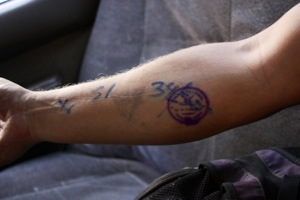 I went to the Palmasola prison to interview the men, who have never formally been convicted or sentenced. Palmasola is a “prison town” where children and families live with the convicted in a village like setting. It’s insane, overcrowded (more than 4,000 inmates), filthy but also colorful and quite “normal” in some ways. I kept thinking of Papillon when I was in the prison. I was not allowed to take my camera in, but I do have a picture of my arm to show you. I got stamped, numbered, checked and crossed by marker for every gate I passed through and bribe I paid.
I went to the Palmasola prison to interview the men, who have never formally been convicted or sentenced. Palmasola is a “prison town” where children and families live with the convicted in a village like setting. It’s insane, overcrowded (more than 4,000 inmates), filthy but also colorful and quite “normal” in some ways. I kept thinking of Papillon when I was in the prison. I was not allowed to take my camera in, but I do have a picture of my arm to show you. I got stamped, numbered, checked and crossed by marker for every gate I passed through and bribe I paid.
Bolivian salt flats
I’ve made it Potosi, Bolivia, one of the world’s highest cities at 4090m. I’m gasping for breath as soon as I roll out of breath, but it is getting better after a few weeks at altitude. I’ve been at 2000-5000 meters for much of my time in South America. The roads in Bolivia are incredible, as in incredibly bad. It reminds me of Western China, maybe worse. But good fun on a motorbike.
The last few weeks have been pretty intense. I’ve been riding pretty hard/fast, without many days off. I realized this morning that I’d only done laundry once since Colombia, which might explain that funny smell. I’ve been riding, writing and doing a wee bit of sightseeing (Machu Picchu) but not a lot of sitting around. So today is a rest day to patch clothes (yes, really, with a thread and needle), do laundry, work on the bike, email, etc.
South America is different than any other place I’ve been for the sheer scale of the land. The mountains, rivers, plains, sky, clouds, roads, everything is bigger, dustier, steeper and grittier than elsewhere in the world. The food is pretty bad (chicken, rice and potatoes. Every day) but the people are super nice, even when I spit out some garbled Spanish question at them. And I’m meeting a lot of crazy travelers on motorbikes and pedal bikes. Far more here than in Central America. I meet at least one other traveler a day.
I’ve done about 28,000 km on the bike so far…and all is well. My license plate fell off from all the rough roads, so after leaving it tucked away for about 800km I’ve now taped it to my pannier. A few bolts have vibrated out (single cylinder plus bad roads) which I replace as fast as I can (like the engine mount that fell out). And the bike got pretty salty on the salt flats…so I found a car wash and gave her the first wash of the trip. The “discount” front tire I bought in Panama is falling apart, literally, and I hope and pray it lasts until Santa Cruz. The panniers are standing strong despite me knocking over a few stone fences with them along the way. My boots are at the shoe repair shop at the moment…gear never lasts when you really put it to the test. And my body…well, I’m tired, got a sore arse, am sunburnt and wind-chapped, but very happy to be on the road.
Getting a shoe shine while in line to cross the Peru-Bolivia border. I stood in this line for 1.5 hrs and then was kicked out when I refused to pay a bribe due to a piece of paper I lost. Then I found the paper, and they had to stamp me through. Ha!
This road will take you home son…to somewhere anyway. Up in the Bolivian highlands, without a proper map, relying on the compass and landmarks. (Like, keep that massive volcano to your left)
We (a German biker I met and rode with for 3 days and I) drove about 30km of the softest, dustiest sand road you can imagine. It was up to 30cm deep and bone dry. I fell off 4 times, but going so slow there was no problem. I was sneezing dust for 2 days, and it was worse because all this dusty gear goes into my tent at night! We camped in an empty sheep pen (stone walls make good shelters) and I think the sheep sneezed when they were chased into the pen the next day.
The Uyuni salt flats, up at around 3600m, fairly simply blew me away. I drove about 100km across the flats, total white world. The salt is flat, hard and fairly smooth. I read about this place as a kid, and was literally giddy with excitement to actually ride my bike across it. I took some salt to use in my next camping meal.
A woman (?) living on the edge of the salt flats.
Just happy to be here. This was one of my big “destinations” of the trip.
That’s real salt of the earth.
Kinda contrasty for my camera, the volcano next to the salt flats. But it looked amazing.
Machu Picchu ++
Cusco is tourist hell, totally driven by the tourist dollar. This is the jumping off point for all tourists on their way to Machu Picchu. A horrible place to be, but still pretty at night.
Machu Picchu, a 15th century Inca city that sits at about 2,500 meters in the Andes. Incredible to see it for myself. incredible to actually see it for myself.
I got there at 7am, just as the mist was clearing to reveal the mystical city.
Mountains around Machu Picchu
I hiked up Machu Picchu Montana for a top-down view…nearly killed me though.
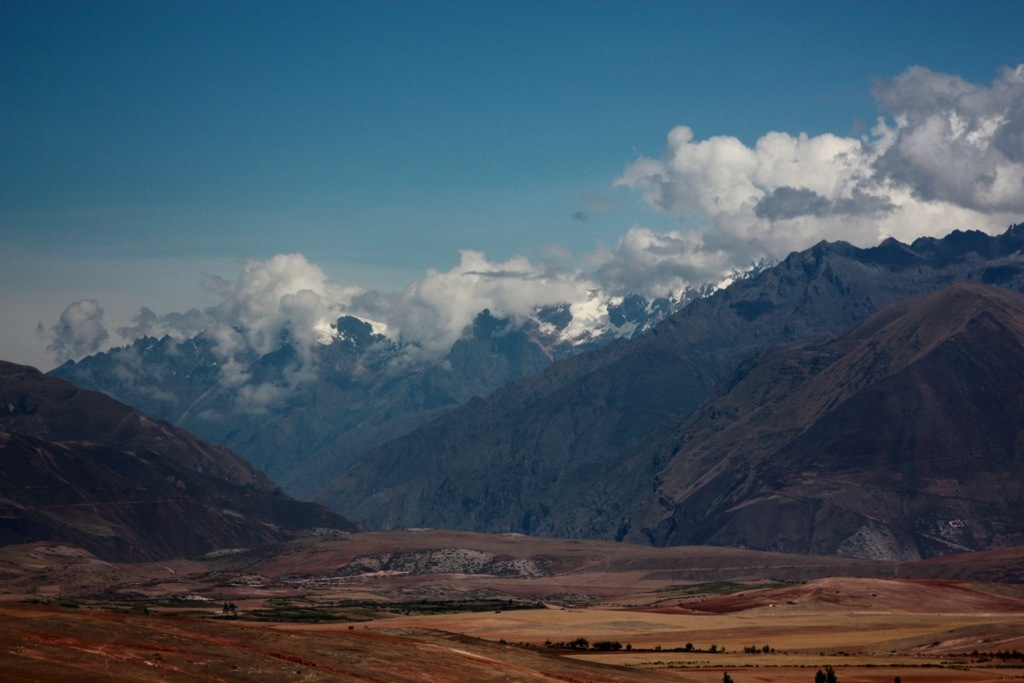
Just some more mountains…scenery here is stunning. I nearly run off the road looking around me sometimes,
Brewing some morning tea at a campsite.
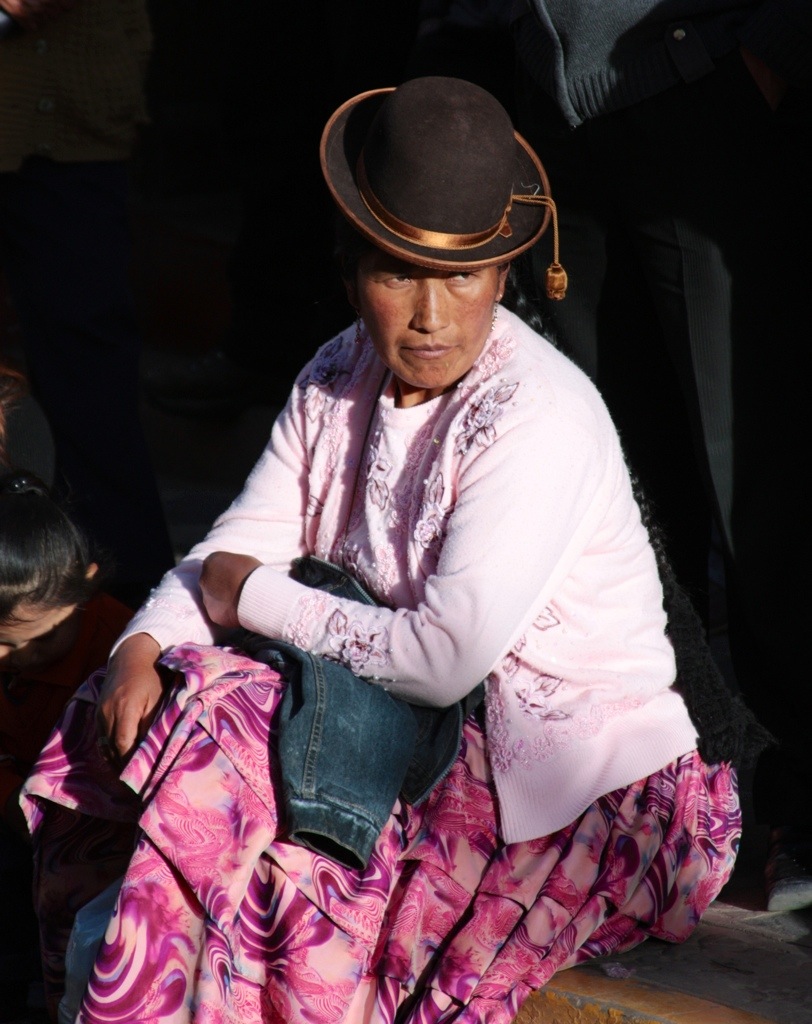 Arrived in Puno, Peru, a lake town, to a huge festival. This is my last stop in Peru.
Arrived in Puno, Peru, a lake town, to a huge festival. This is my last stop in Peru.
Wanna buy my bike?
I’d like to sell my bike to someone planning to ride north. The bike will be available in Jan/Feb, in either S. Argentina or somewhere in Chile. I’m happy to change my plans a bit to meet the buyer.
2010 KLR 650, bought new in Spring 2012 in Canada (demo bike with 650km on it). Well maintained, no crashes so far (fingers crossed!), comes with Hepco & Baker alum pannier set, Kawi extended windscreen, stiffer main shock spring, SW MOTECH center stand & crashbars, highway pegs, upgraded sealed battery. Tools, spare parts (cables, bulbs, inner tubes, etc) included. I’ll throw in some camping gear as well if you like. It now has 26,000km, and I expect it will be close to 40,000km by the time I’m done. I’m asking $5,000 and open to offers.
;
Ride to Cusco
I’ve just arrived in Cusco, a small city in the middle of the Peruvian mountains that is a total tourist nightmare. Lovely colonial buildings and old cobbled streets though. This is the main town near Machu Picchu, the ruins of the ancient Aztec city. I’ll likely stay here a day or two and get some writing done, although prices are triple what they are elsewhere in Peru, and then go see Machu Picchu before heading to Bolivia.
I was in Huacachina (pictures in previous post), which is about 750km from here. I took two days to ride over, camping along the way. Most of these pictures are of the scenery along the way. Impressive mountains, with the road often topping 5,000 meters.
A very tired and dirty rider after 10 hrs on the road.
High altitude lake. I was driving around on a path looking for a place to camp, but the wind coming off the lake was bitterly cold, so I continued on looking for some shelter. It was sunny, but cold enough that there was snow in the shade and the water had ice around the edge.
And then I found this little refuge. A broken down herder’s hut just big enough to fit my tent, and some pretty splendid views. Only problem was that I was at around 5,000 meters, so I had a headache, felt dizzy, and was panting like a dog. Made for a troubled night of sleep, but it was well worth it.
There are heaps of wild llamas running around on the plateaus. They make a very odd sound, a cross between a bleat, a yelp and a belch. And they all defecate in one spot. No, really. I actually saw one go to the designated crapping spot, do his thing, and then wander off. There were only turds visible in these areas. Maybe the altitude was playing with my head, but that was my impression.
Hour after hour of this, with some dirt side roads thrown in occasionally for a bit of fun. I’m getting pretty good at curves by now.
The scale of this landscape is breathtaking. Huge, huge valleys, massive distances, and crystal clear air so you can see it all.
Coastal Peru
The fishermen in Huanchaco, Peru, which is on the coast just north of Lima, use an ancient reed boat to go fishing. One man, one boat. They kneel in them and paddle out to sea.
Huanchaco, Peru
Reed boat in Huanchaco.
I spent more than a day driving along the Pacific Ocean coast. In Peru the desert leads right to the sea. When I saw the road would soon take me away from the sea I drove down to the beach for a bit. My first attempt — cutting through a luxury housing development to get to the sea — didn’t turn out great. Thankfully the guards who came to chase me away also helped me get my bike unstuck from the soft sand. I drove a few more KM and found another access point where I could stop and say goodbye to the Pacific. I won’t see it again on this trip.
Hotel in Huacachina, a small oasis town near Ica, a city that was nearly destroyed by an earthquake a few years back. This place was overrun with tourists doing tourist things, like climbing into dune buggies to be driven around the sand, or paddling around the small lake on small boats. But it was still a nice setting.
Sand…and more sand, and blue sky. That’s the Peruvian coast in a nutshell.
Ceviche, which is raw fresh fish marinated in lemon and chilli, and Inca Kola, the local soft drink. I’ve had my fill of both, although both are very good. They’re both staples here.
Goodbye Pacific Ocean
I’m still upright…
More sand and blue sky.
I found an odd little park, called Reserva Nacional Lomas de Lachay, formed by an oasis area in the desert. After days of arid, sandy, windy landscape, suddenly I was in a misty green jungle. The ecosystem is created by mist that forms in the area. It never rained, but my gear and I got soaked from the heavy mist. Lovely, mysterious little camping spot, and I had the whole reserve to myself.

 Follow
Follow